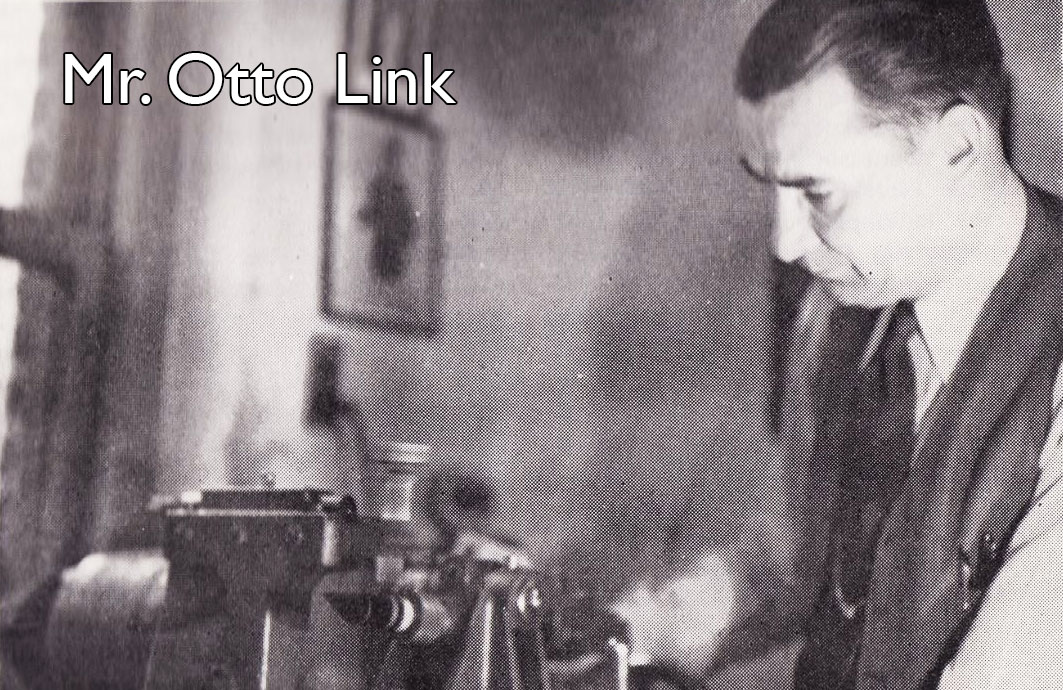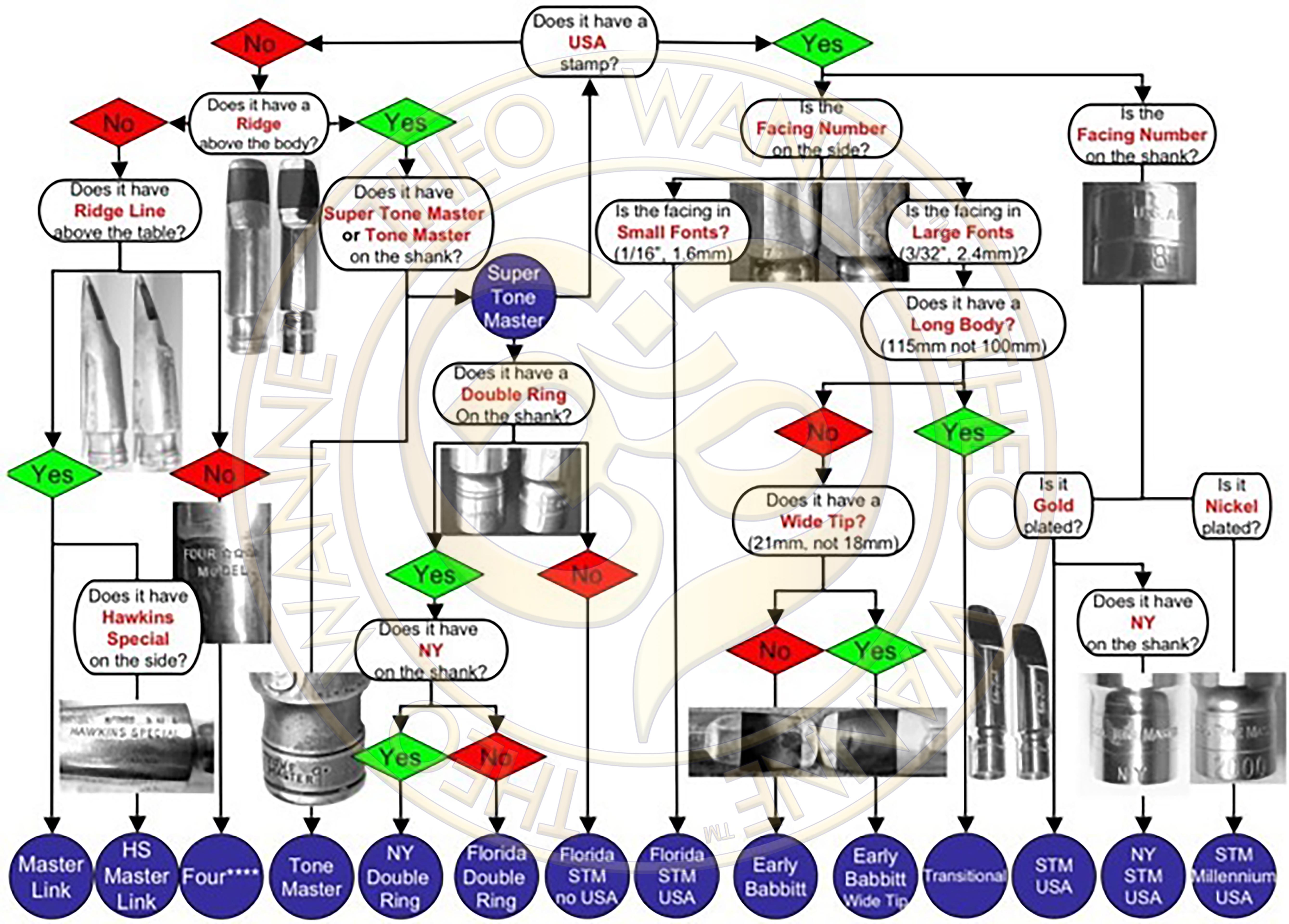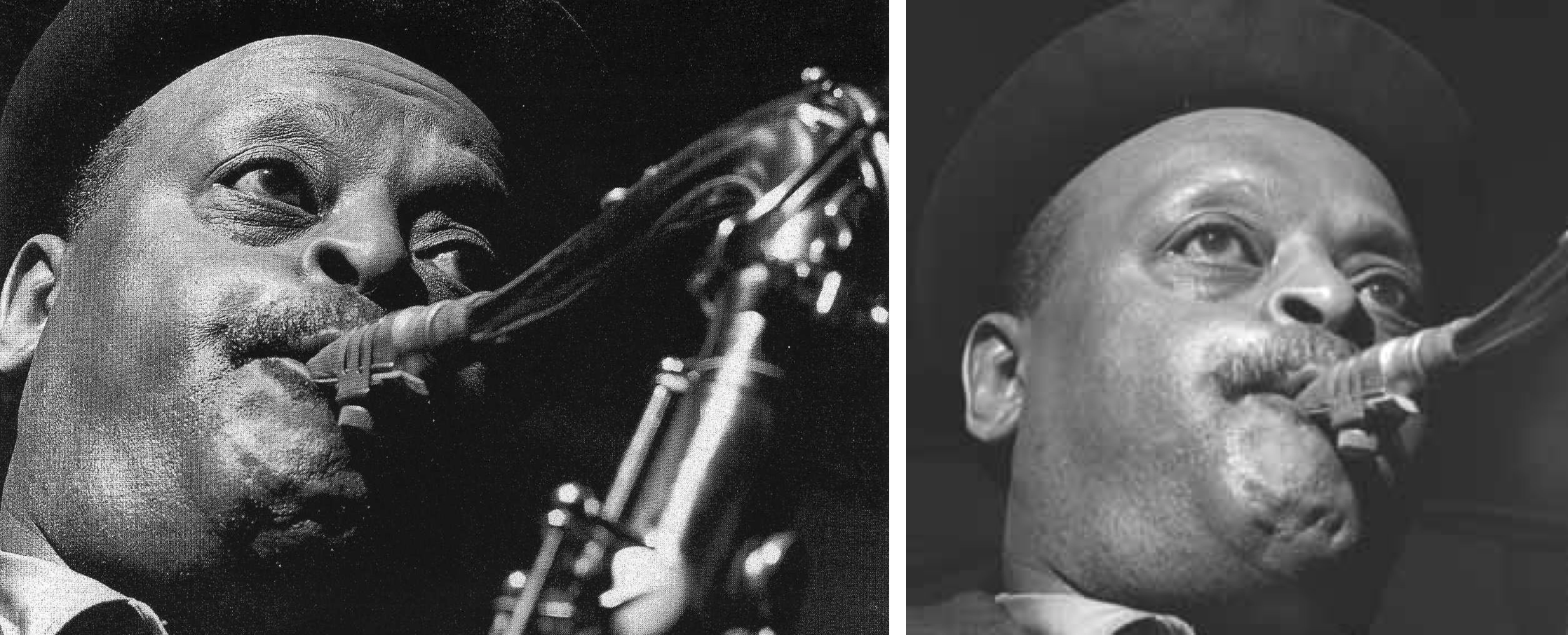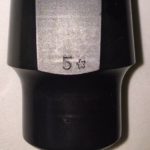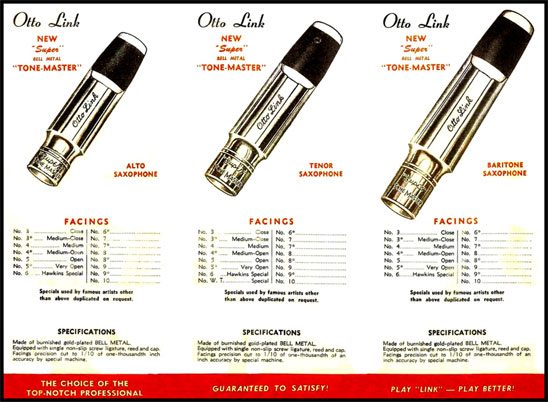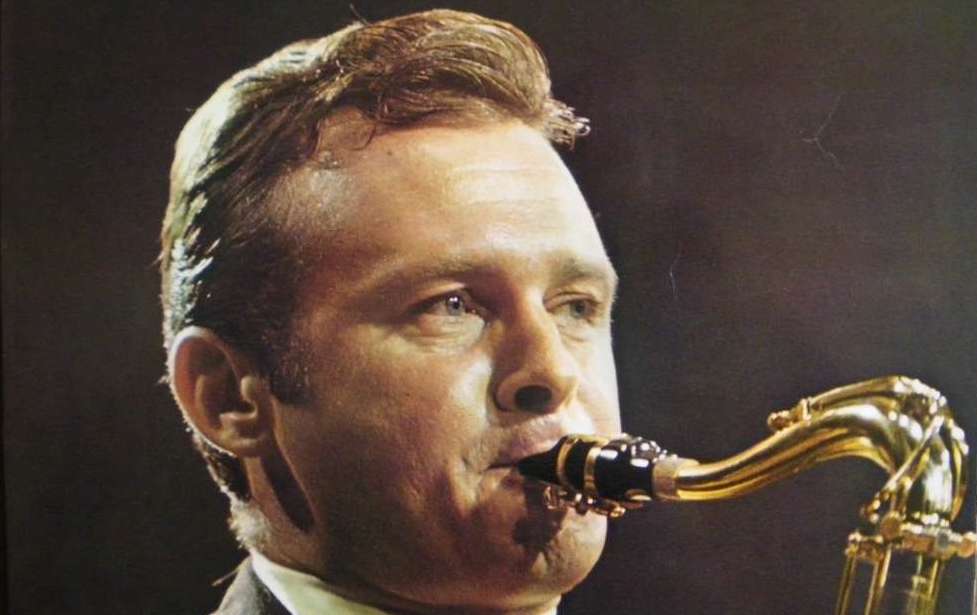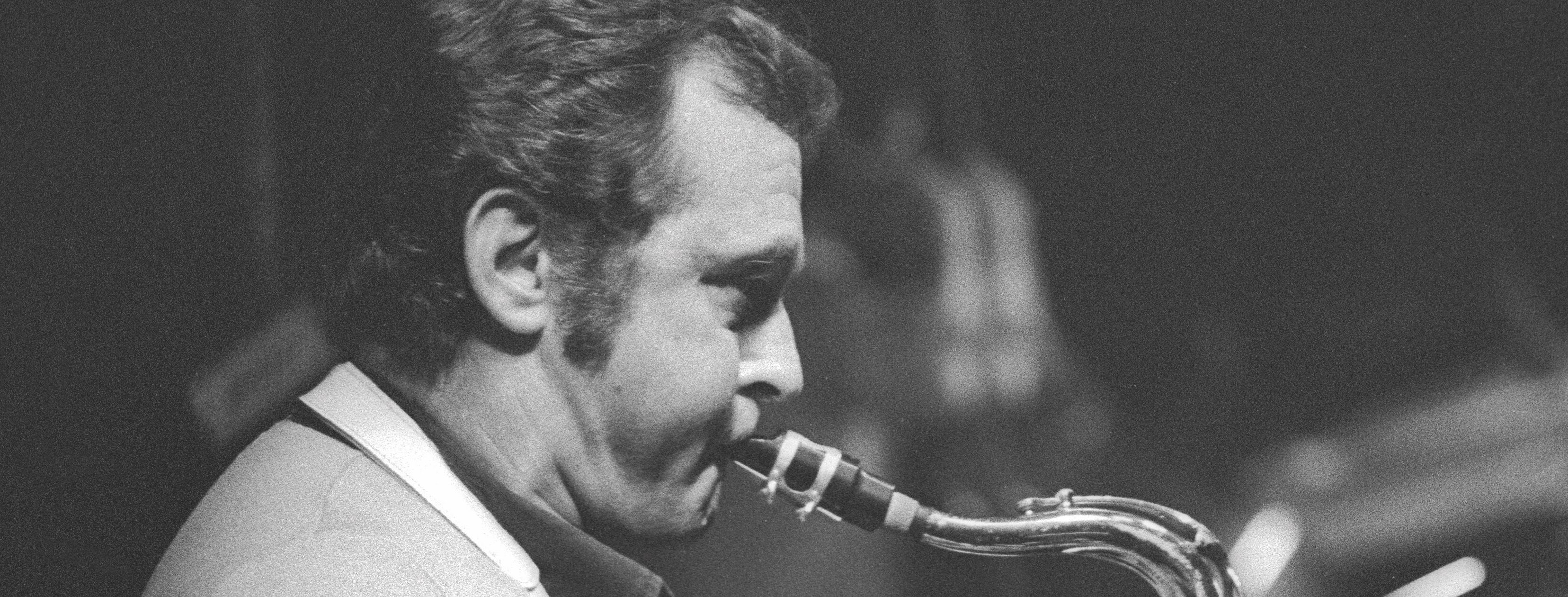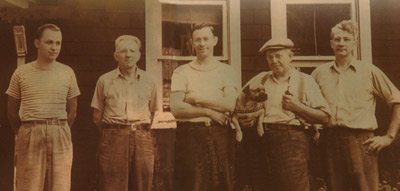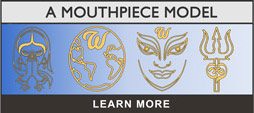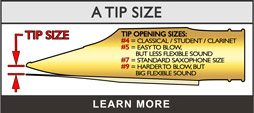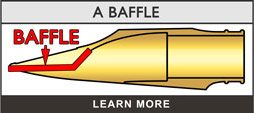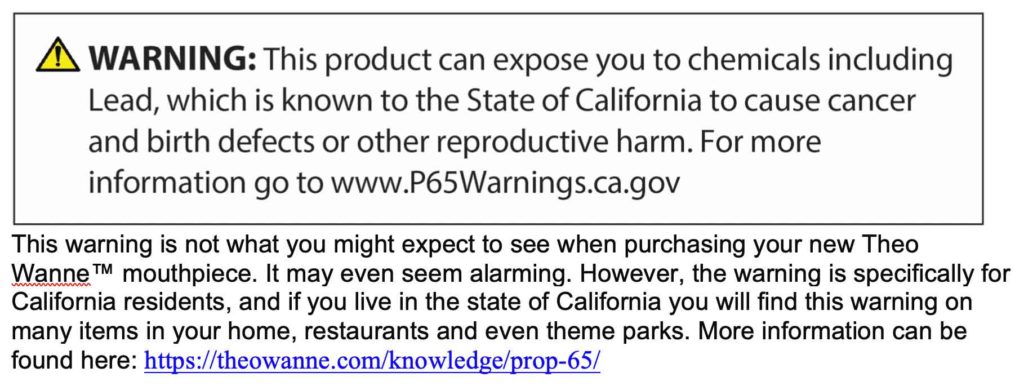OTTO LINK HISTORY OVERVIEW:

- 1920 – Otto Link worked at WS Haynes company
- 1922 – Otto Link & Frank Meyer open retail music and band repair shop at 792 8th Ave, NY City.
- 1930 – Master Link metal mouthpiece made on West 48 street in Manhattan. The factory later moved to Freeport NY.
- 1935 – Four Star Model metal mouthpieces made
- 1936 – The first Hard Rubber ‘Slant Signature NY‘ mouthpieces made as low cost alternative to metal
- 1940 – Tone Master and Reso Chamber mouthpieces introduced
- 1946 – ‘Improved’ Tone Master introduced
- 1950 – ‘Double Band’ metal, and Tone Edge ‘Slant Signature’ hard rubber, mouthpieces made
- 1955 – Otto Link business sold to Ben Harrod, who moved the business to Pompano Beach, Florida. ‘Double Band’ mouthpieces continue
- 1965 – Florida ‘No-USA’ mouthpiece made
- 1967 – Florida ‘USA’ mouthpieces made
- 1972 – Otto Link mouthpieces made at the JJ Babbitt factory in Elkhart Indiana. The ‘Transitional Florida‘ mouthpieces made during move.
- 1975 – ‘Early Babbitt’ mouthpiece made.
- 1980s – Current models produced
- 2009 – Vintage Series released
- 2019 – FL Otto Link tenor mouthpiece released
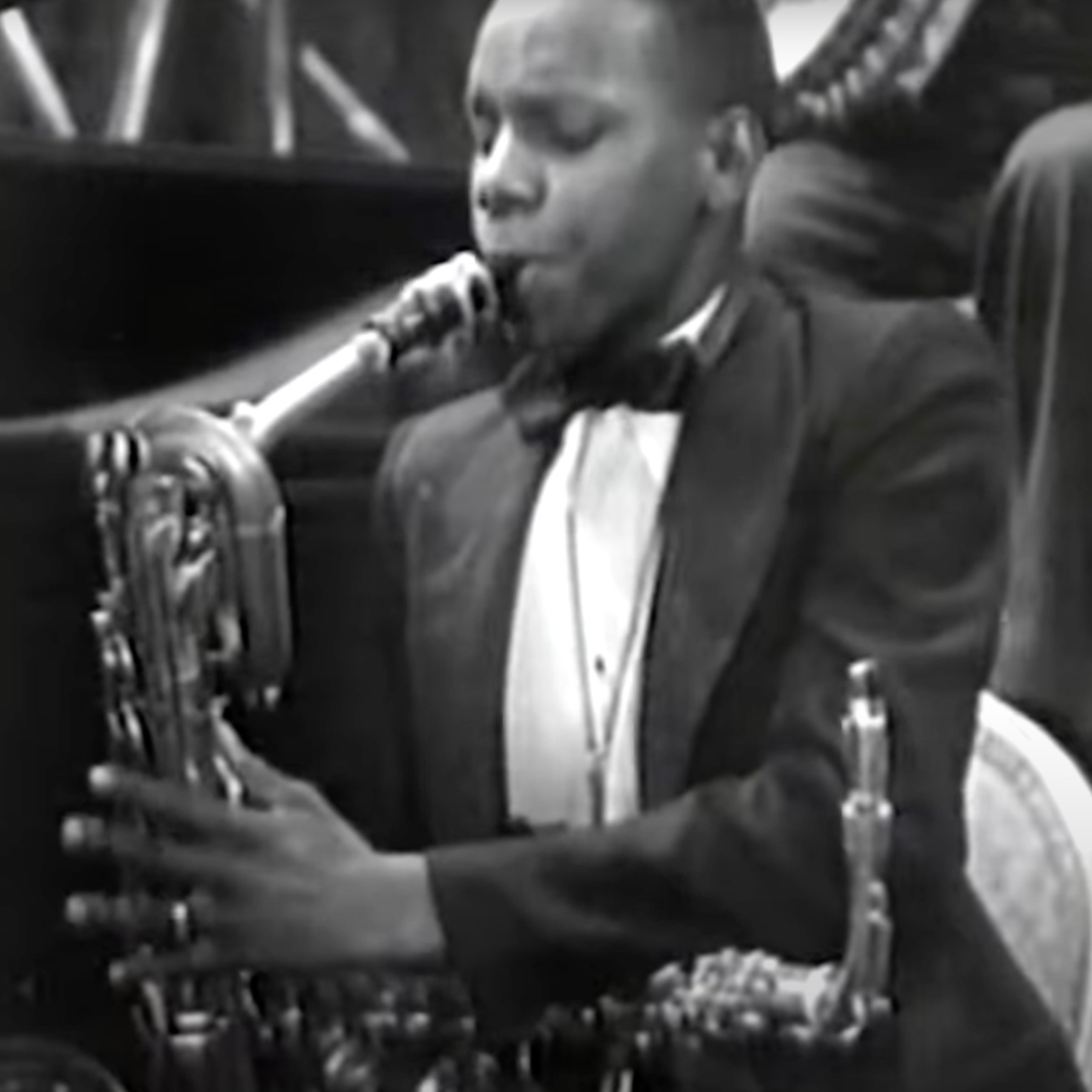 1930 MASTER LINK MOUTHPIECE
1930 MASTER LINK MOUTHPIECE
The first mouthpiece made by Otto Link in 1930 was called the MASTER LINK. These had a very low-flat baffle, a true-large-chamber, rounded inner side walls, very small tip openings (usually 3 or 4) and a long, deep facing. Hence, they had a very dark, non-projecting sound. It had cut out ridges beside the table, allowing the ligature to slide on. The pressure plate was very thick brass, also giving a super dark sound. The first picture I have seen of it is from August 1930 of Harry Carney playing with the Duke Ellington and orchestra.
Later versions replaced the slide on ligature with the same band ligature later present on the FOUR**** MODEL. The rest of the mouthpiece remained the same.
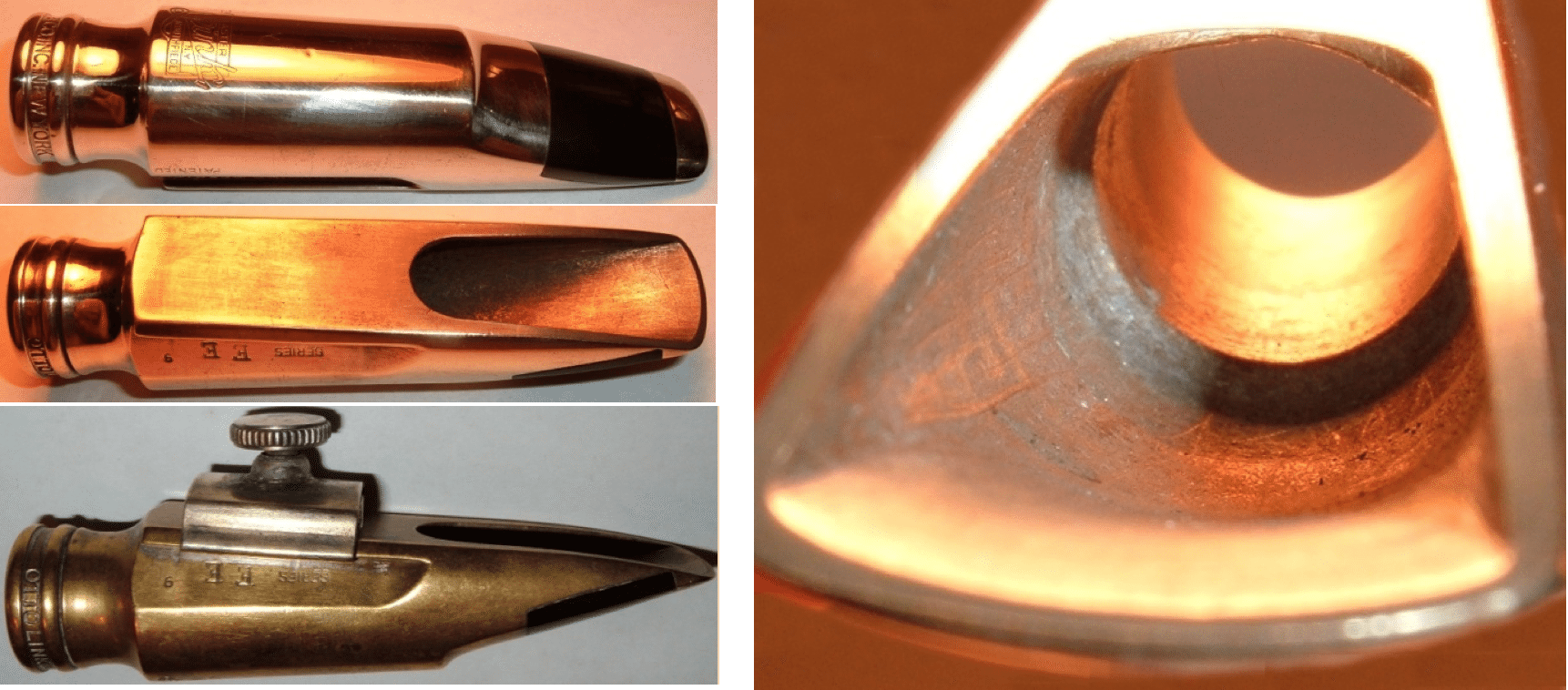
Ben Webster played this model:
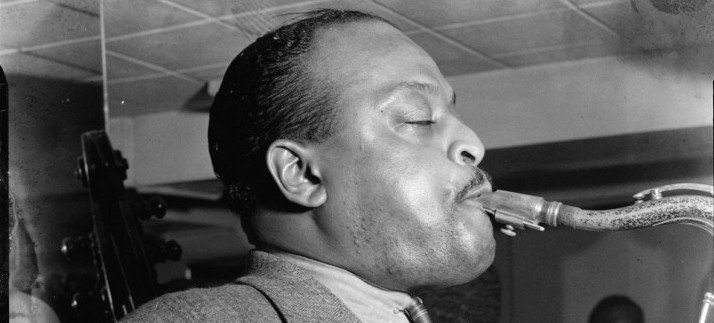
A version of this mouthpiece was made for Coleman Hawkins and was named the HAWKINS SPECIAL. At this time, Kohlert, Connetable and Meyer mouthpieces were made from this same blank.

Coleman Hawkins played on this mouthpiece as well as on the next model, the Four Star Model. In 1939 Coleman Hawkins fame helped launch the Selmer Saxophone brand with his fame and hit recording of ‘Body and Soul’.

1935 FOUR**** MODEL
The next model was the FOUR**** MODEL mouthpiece. This mouthpiece was named after the four stars of the saxophone world at the time: Charles Strickfaden, Henry Wade, Pat Davis, and Ross Gorman. Internally it is almost identical to the Master Link Model.
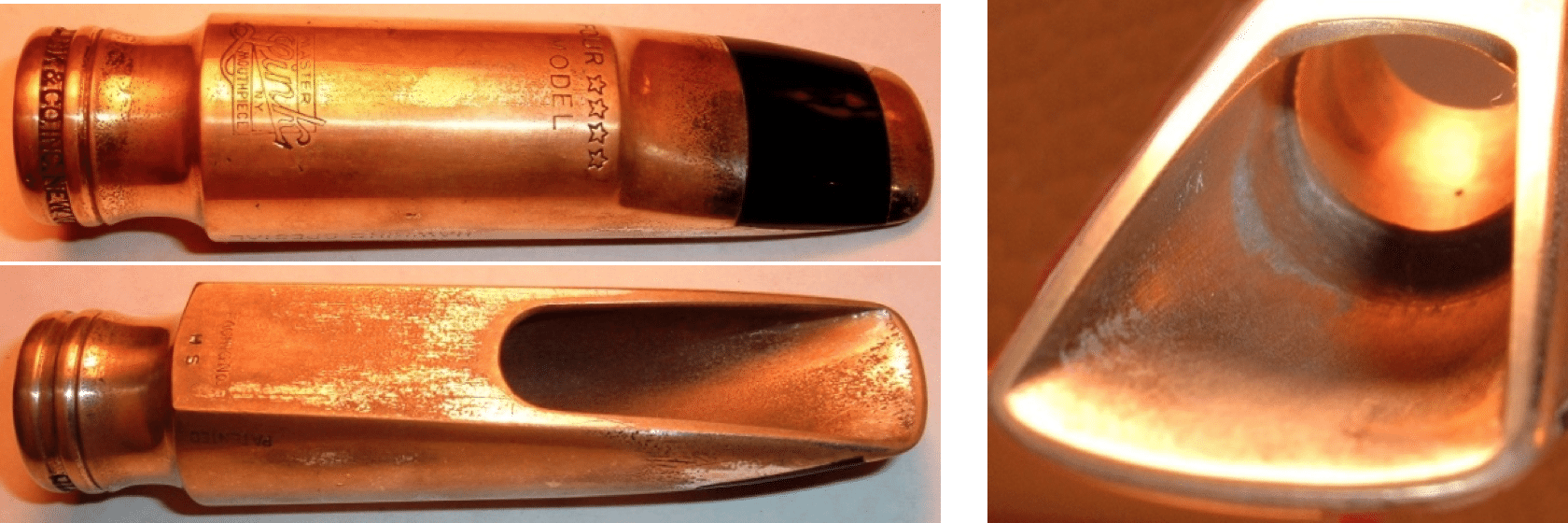

Both the MASTER LINK and the FOUR**** MODEL did not have a ligature ridge on top of the mouthpiece like all Otto Links to follow. They did have serial numbers. Both of these mouthpieces were made in New York as marked on the shanks. Both Coleman Hawkins and Ben Webster switched to this model.
Unique facings of this mouthpiece include one designed for Coleman Hawkins which said HAWKINS SPECIAL on the side and FACING NO H S on the table. Another is the VIDO MUSO model.

Here are some ads from this period showing the four star model:
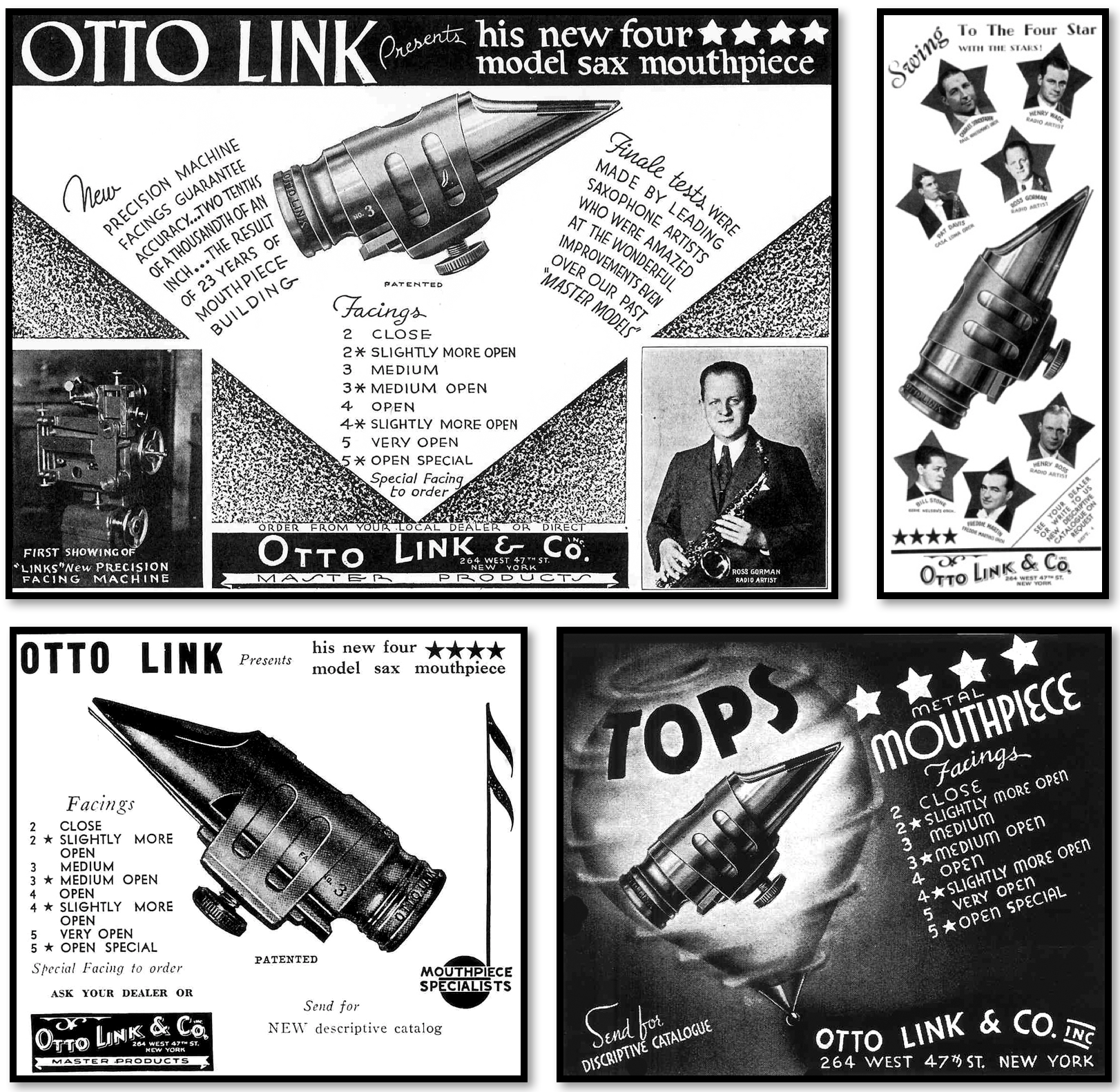
1936 THE FIRST HARD RUBBER MOUTHPIECE
In 1936 the first hard rubber mouthpiece by Otto Link started production. They had “EBURNATED BAR” written on the top/body of the mouthpiece and were a budget line for Otto Link, like a student model. This is because back then hard rubber was so much less expensive than brass. They had the largest chamber in the history of rubber Otto Links, and the lowest baffle. Interestingly, they tended to play best with small tip openings. The serial numbers and tip openings were marked on the table. They had Otto Link written at an angle across the back of the mouthpiece with a pretty chain link band going around the front portion of the body. They also sported an attractive machined shank, matching the look of their metal mouthpieces.
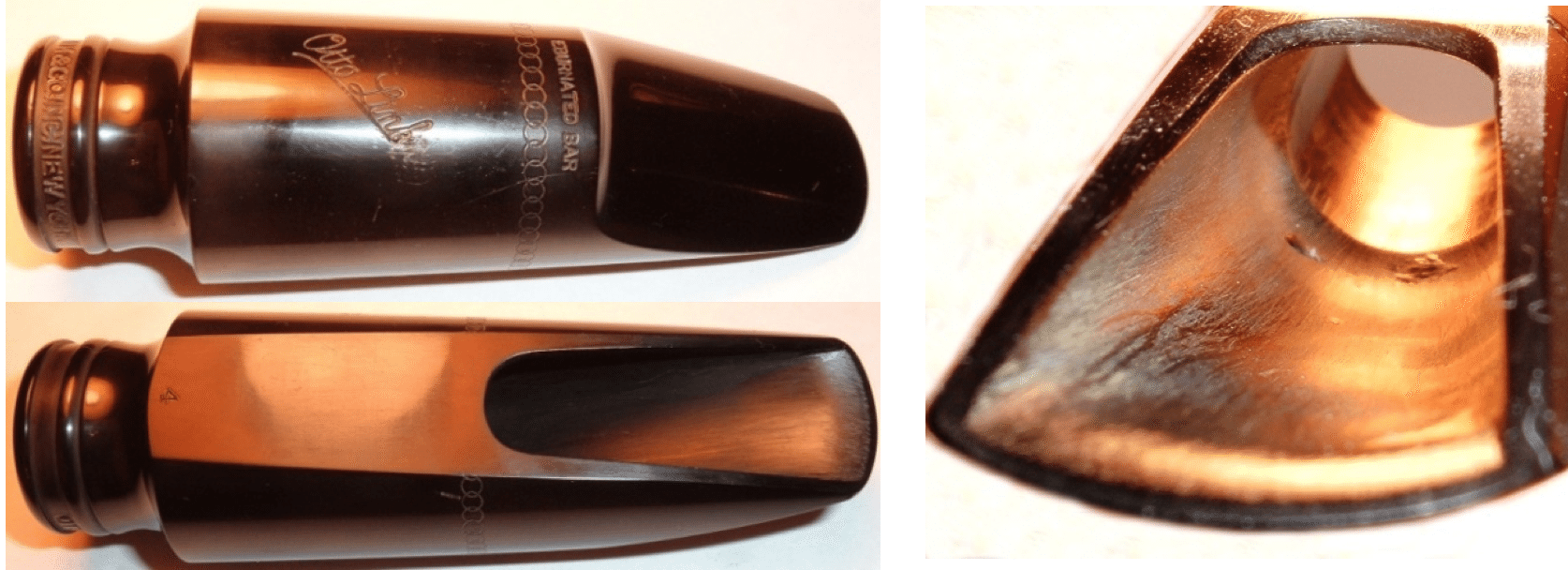
Here are some Otto Link Ads from this period showing their product line-up:
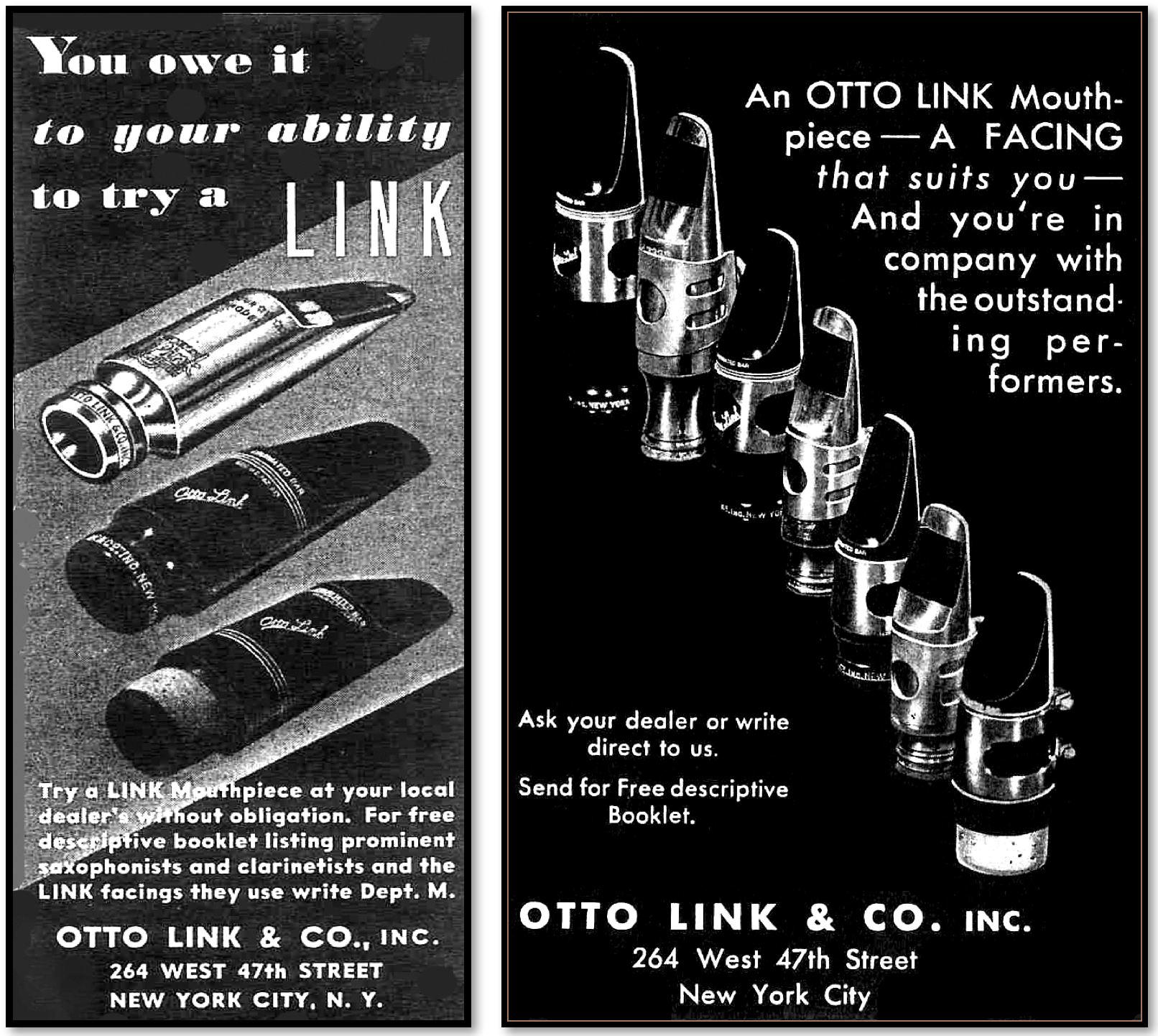
1940 TONE MASTER MOUTHPIECE
Otto Link started putting a ridge on top of their metal mouthpieces to make it easier to center the ligature. These mouthpieces were made in New York and had a bit more projection then the older models. They had very long and deep facings (like the older models), playing better with small tip openings. They did, on rare occasions, make larger tip openings, such as a 7 or 8. However, these mouthpieces still retained the very long and deep facing, which curtailed their responsiveness. The TONE MASTER models had silver under gold plating. The serial numbers were on the side and the tip openings were stamped on the table. The ligatures truly improved at this point. The reed contact plates were much thinner, allowing the reed to vibrate more freely. The top of the thumb screw now read, OTTO LINK.
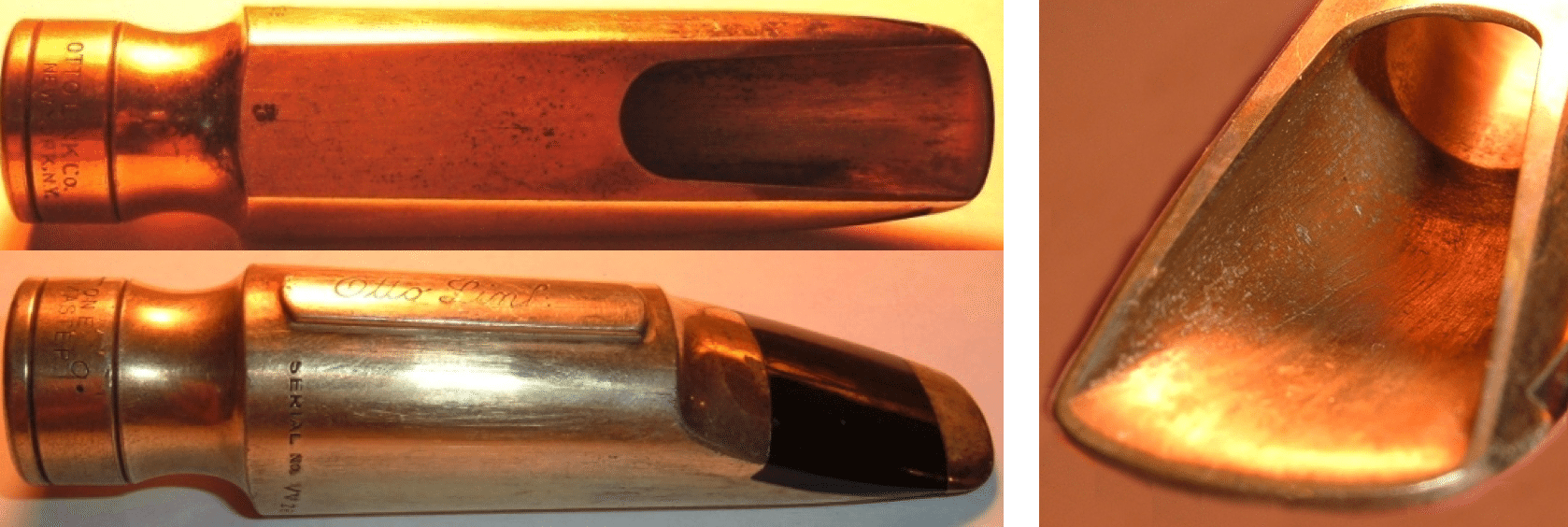
The first models had four smaller digits for a serial number.The later models had three larger digits:

Some of the musicians that used the Otto Link TONE MASTER included:
- John Coltrane (He put a wedge inside his Tone Master so that it would get signature bright sound. His mouthpiece was a size 6.)
- Hank Mobley (tenor)
- Ben Webster (tenor)
- Lester Young (tenor)
- Coleman Hawkins (tenor)
- Georgie Auld (tenor)
- Buddy Tate (tenor)
- Charlie Barnett (tenor)
- Benny Carter (alto)
- Vido Muso (tenor)
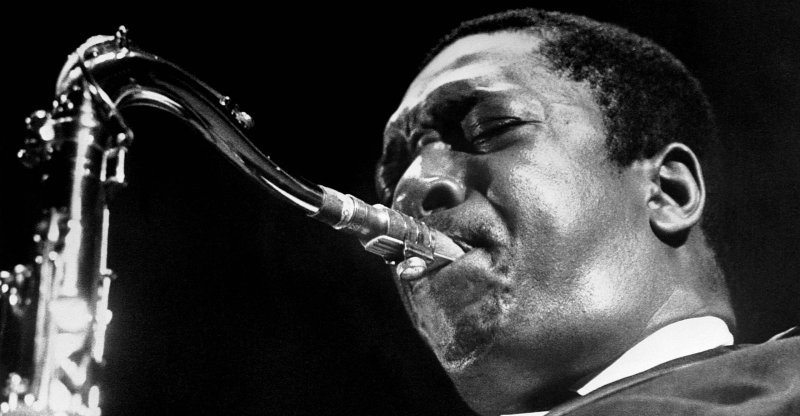
Jimmy Heath on a Tone Master:

Ads from the Tone Master Period:
1940 RESO CHAMBER HARD RUBBER MOUTHPIECE
These hard rubber mouthpieces were made in conjunction with the TONE MASTER. They have RESO CHAMBER written in a circle on the back. The very first of these did not have a tip opening marking. Later, a tip opening number was put on the bottom of the table. They have a dark mellow sound.
- Woody Herman (clarinet)
- Bud Freeman (tenor)
- Georgie Auld (clarinet)
- Joe Allard (alto, clarinet)
- Joe Marsala (clarinet)
- Vido Musso (clarinet)
1950 SUPER TONE MASTER ‘DOUBLE BAND’ MOUTHPIECES
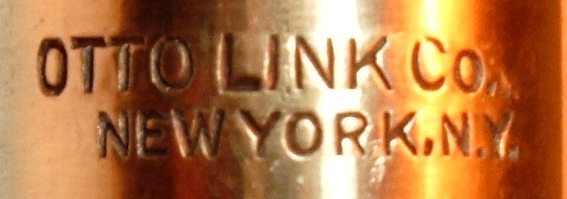

Then they dropped the back lines around the shape. This ‘double’ line design is the next period of Otto Link mouthpieces. The one shown below still has New York written on the shank and the serial number on the side. It still very much a Tone Master on the inside.

All of these mouthpieces are characterized by two parallel bands traversing the shank. They are known as the Otto Link double band mouthpieces. The first pieces had a very long bite plate. Later, they permanently switched to shorter bite plates. They had silver plating under the gold like the NY TONE MASTERS.
The first ligatures looked identical to the NY TONE MASTER ligatures, only missing the OTTO LINK name on the ligature screw top. They were the best sounding of all vintage Otto Link ligatures due particularly to the reed plate design which was quite thin.

Hank Mobley on a ‘Double Band’:
1950 FLORIDA TONE EDGE ‘NO USA SLANT SIGNATURE SIZE STAMP ON TABLE’ MOUTHPIECES:

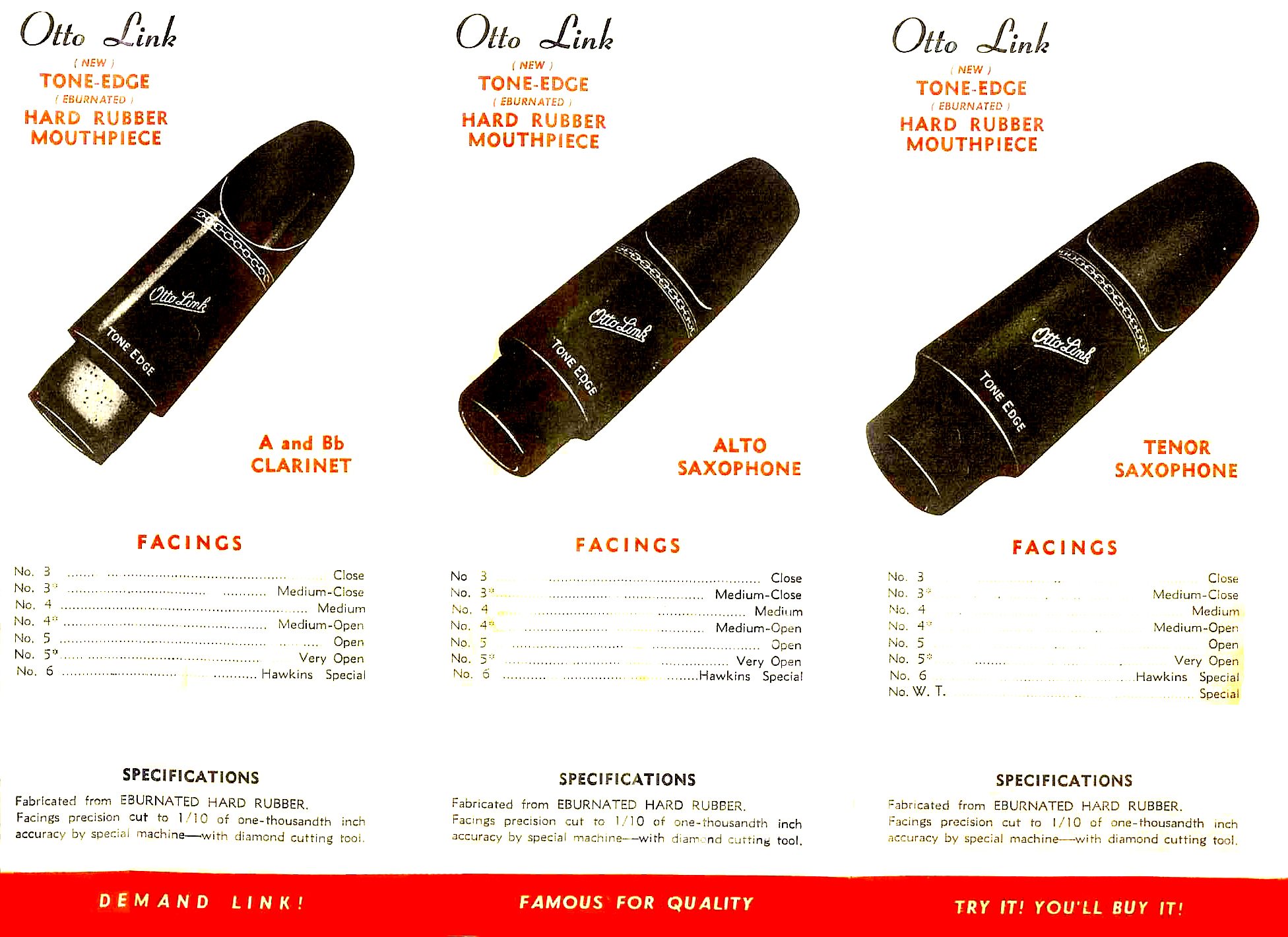
1955 THE MOVE TO POMPANO BEACH, FLORIDA:
In 1955 Otto Link moved to Pompano Beach, Florida. The metal mouthpieces made in Florida looked like the earlier SUPER TONE MASTER ‘Double Band’ models with a few exceptions. The serial numbers were larger and NEW YORK was no longer stamped on the shank. They also sounded brighter due to a bit more baffle material right behind the tip rail.

At this time, musicians began playing larger tip openings, so Otto Link began producing mouthpieces in sizes up to 10. Previously, standard tip openings only went as high as a 5*. The facings radically changed from the NY models as well. Instead of using the longer facings with smaller tip openings (like the NY models), Otto Link started producing their mouthpieces with medium facings, allowing for the bigger tip openings.
The first versions had a very shallow roll-over baffle (like the NY Otto Links). By the end of the double band model run though, Otto Link started putting a lot more roll-over to their baffles, creating a much brighter sound. The ligatures had a thinner screw and a cross-hatch pattern.
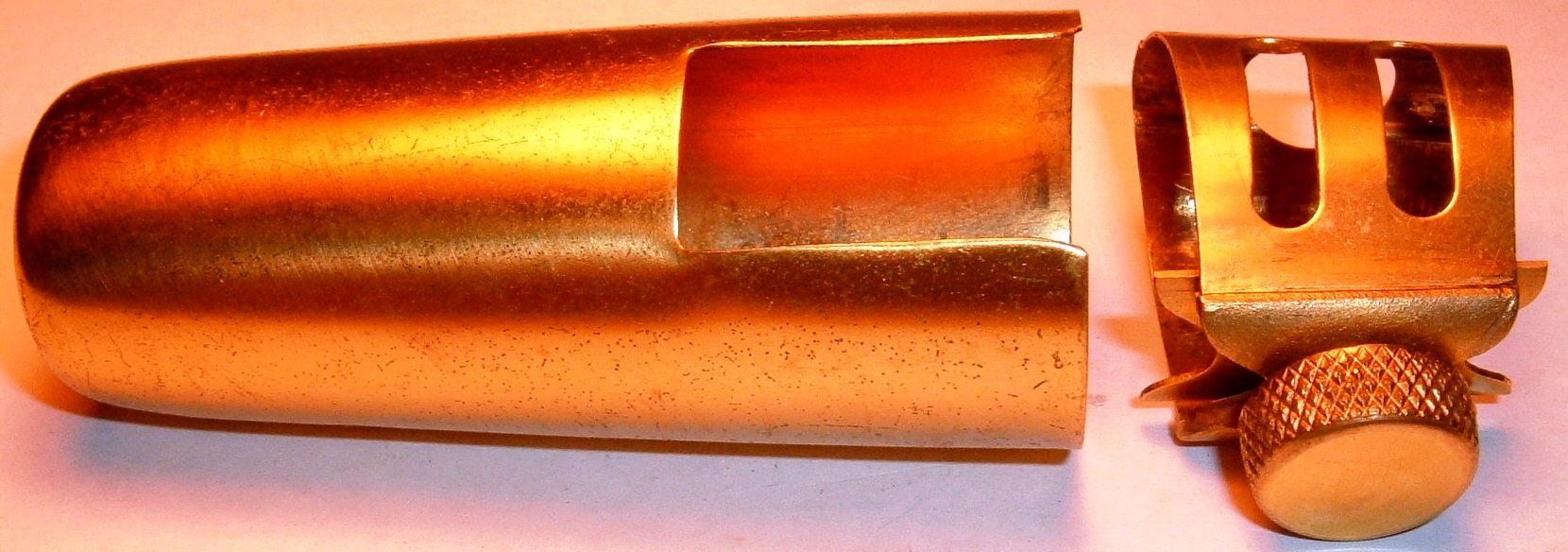
1955+ FLORIDA TONE EDGE ‘SLANT SIGNATURE’ MOUTHPIECES – TIP SIZE ON THE SIDE:
The second version of ‘SLANT SIGNATURE’ mouthpiece had a squarer shank, and had the tip size on the side of the mouthpiece. These were made standard up to a 9 and had a lot more baffle material in them. The No USA version had a roll-over baffle similar to its metal brother, however, perhaps even higher, and are considered the most desirable of the slant links along with the later USA ‘Slant Signature’ version. I am not sure of the date when these first started to be made, but my ‘best guess’ is after the move to Florida in 1955 up to around 1965.
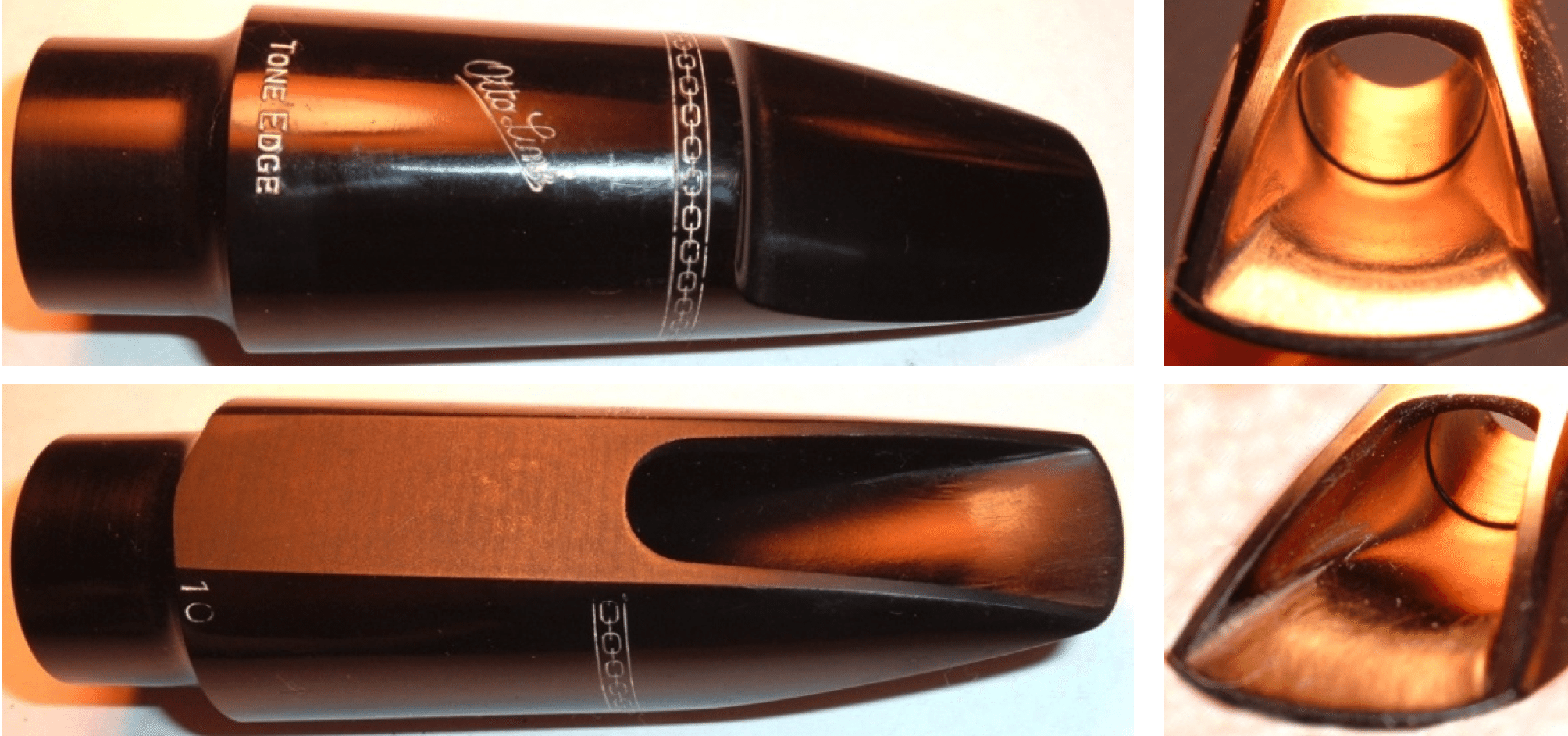
Stan Getz played the ‘Slant Signature’ No-USA Tone Edge tenor:
1965 FLORIDA – NO USA “SUPER TONE MASTER” MODELS:
SUPER TONE MASTER METAL MOUTHPIECE: The Next Florida “Super Tone Master” generation did not have serial numbers, and the SUPER TONE MASTER was placed in-between the two bands on the shank. The change to having SUPER TONE MASTER between the two bands on the shank has stayed with OTTO LINK ever since. While, later SUPER TONE MASTER mouthpieces had ‘USA’ stamped between the two bands on the shank, opposite the SUPER TONE MASTER, this mouthpiece did not. For this reason, it is called the No USA model.
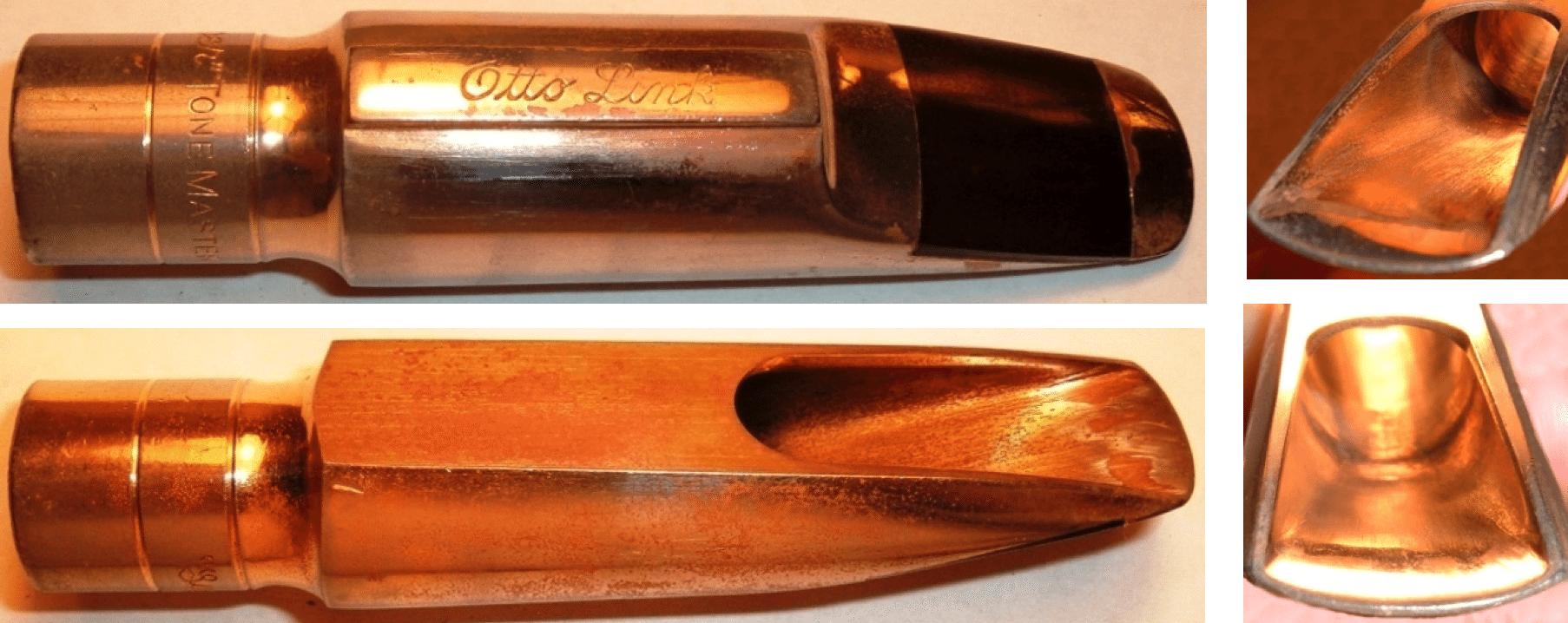
The first no USA models had a very high and deep arced roll-over baffle. This made them very bright. Since this roll-over was completely done by hand, the sound from one piece to the next varied greatly (Picture to the LEFT). The later versions had less of a round, and a bit more of a step shape. (Picture to the RIGHT):

OTTO LINK once again appeared on the screw top, but this was dropped after only one year of production. Otherwise these two models are identical.

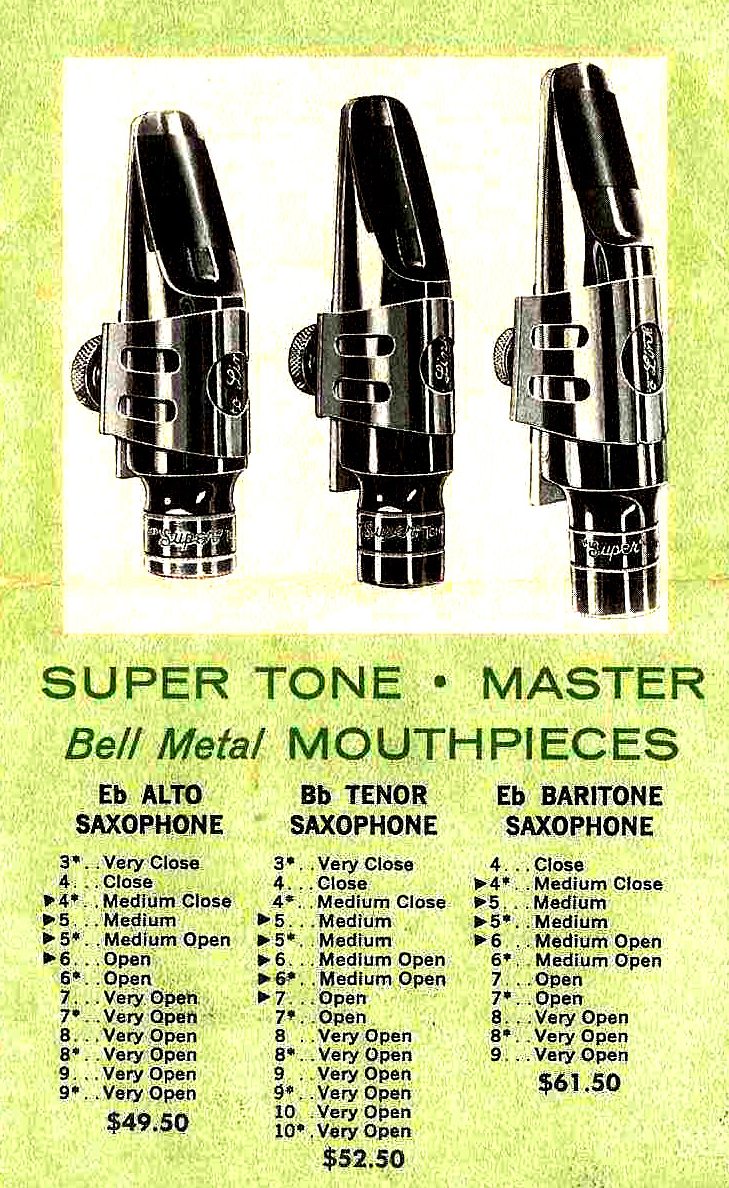
1967 FLORIDA – ‘USA’ MOUTHPIECES
SUPER TONE MASTER METAL MOUTHPIECE: Around 1967, a stamp reading U.S.A was placed on the shank opposite the SUPER TONE MASTER marking. They all had nickel plating underneath the gold plating. The gold plating was very thin, so it is very common for the gold to wear off from normal handling showing the nickel plating underneath.
These had an elongated (flat) roll-over baffle. This generated less buzz to the sound, but increased the warmth, fatness, and projection that made Otto Link famous.
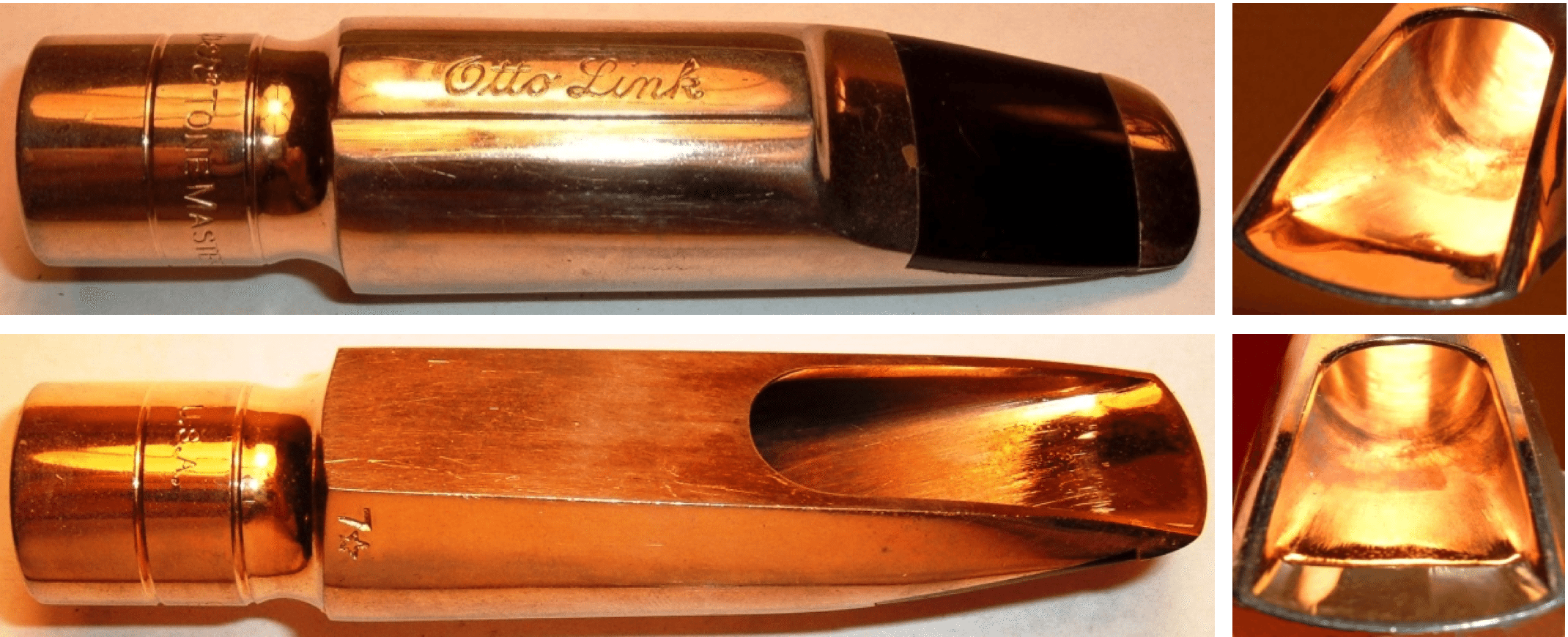
The ligatures were characterized with a T stamped on the screw head for tenor saxophone ligatures, and an A for alto ligatures. The baritone ligatures did not have a stamp. Like all the previous TONE MASTER and SUPER TONE MASTER ligatures, the first run of had a cast support built into the ligature body giving the screw more thread contact. Later ligatures did not have this feature.
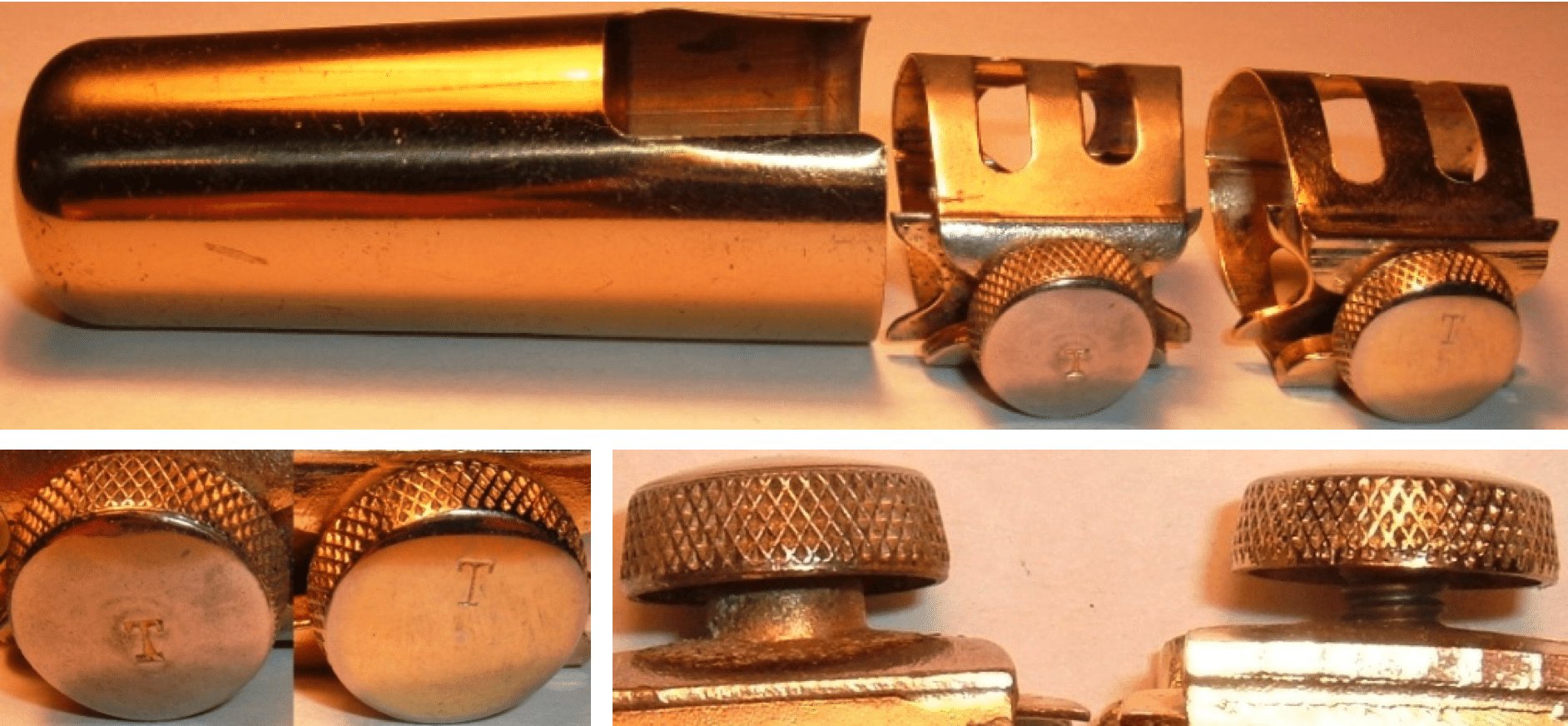
Dexter Gordon played a Link of this era through most of his later years:
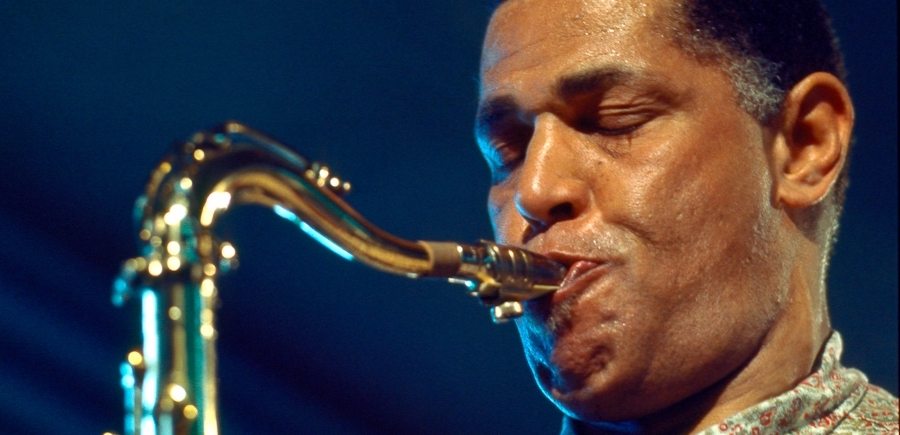
Through the years, Otto Link provided a refacing service to their customers. You could send in a mouthpiece to get the tip opening changed or copy the facing from another mouthpiece.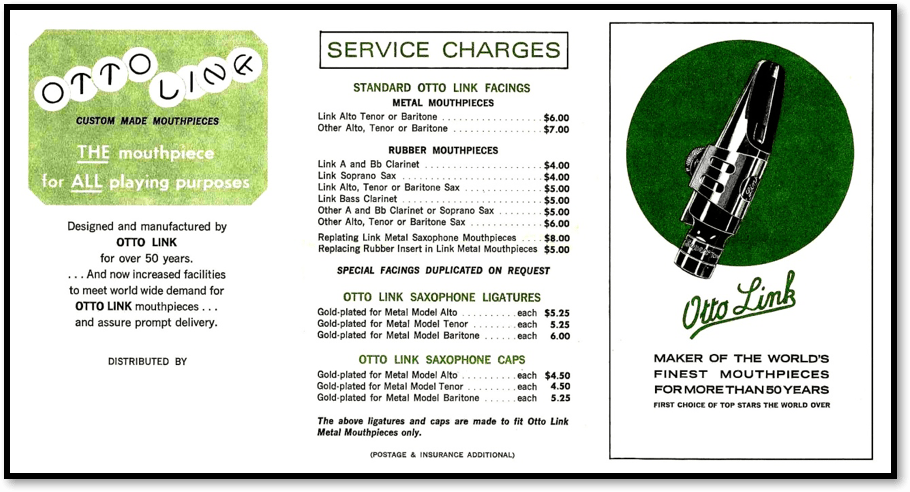
1967 SLANT SIGNATURE TONE EDGE – USA:
This version of the Slant Signature Tone Edge added USA to the shank. Like the second generation No-USA version it had lots of extra baffle material, great projection, and the tip size on the side of the body. Larger tip openings started hitting the market this time as well; these were made up to a size 9.
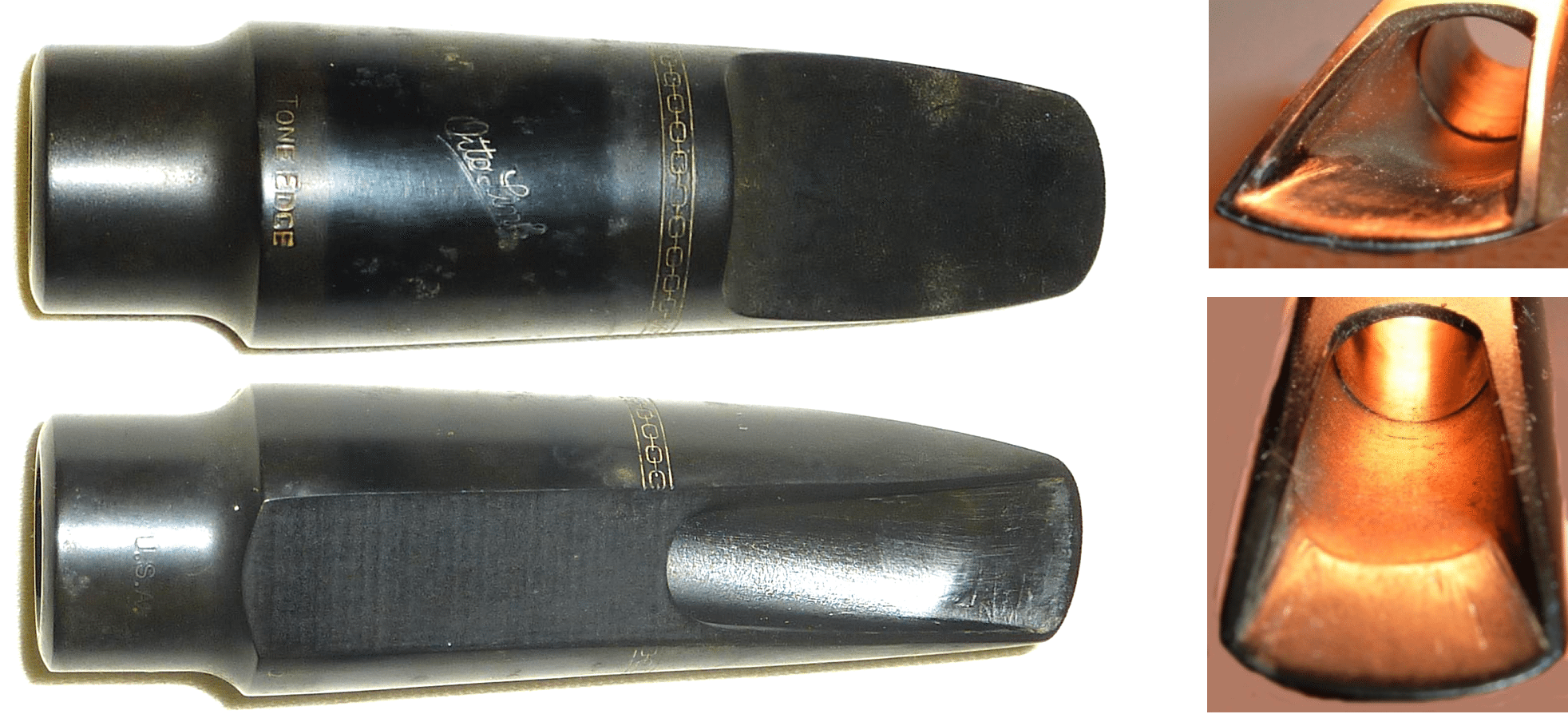
From left to right: 1. No USA number on table 2. No USA number on the side 3. USA version with number on the side:
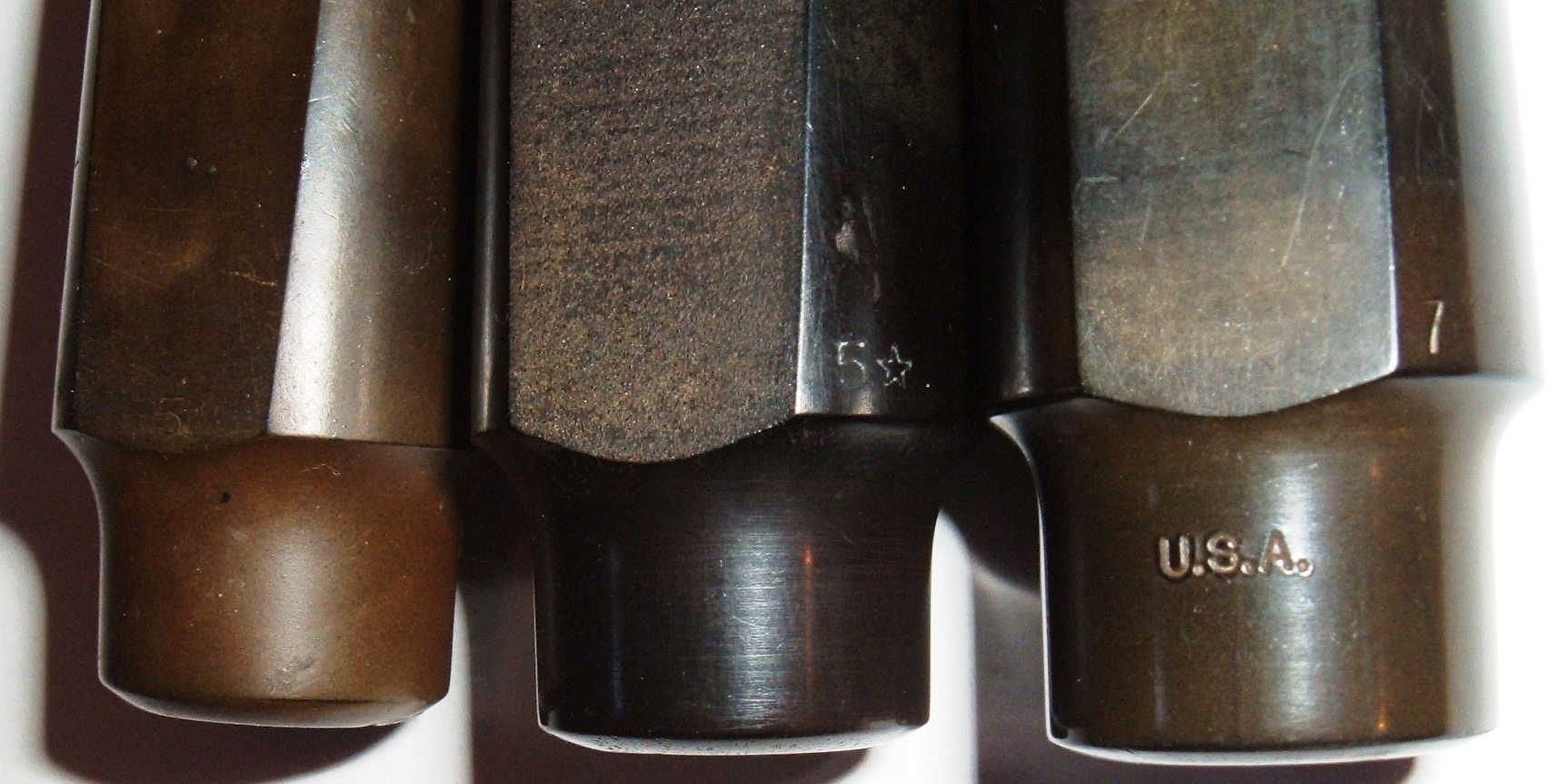
Here is an Ad showing the mouthpiece Lineup at the time of Otto Link Tone Edge mouthpieces. Notice now that larger tip openings are offered: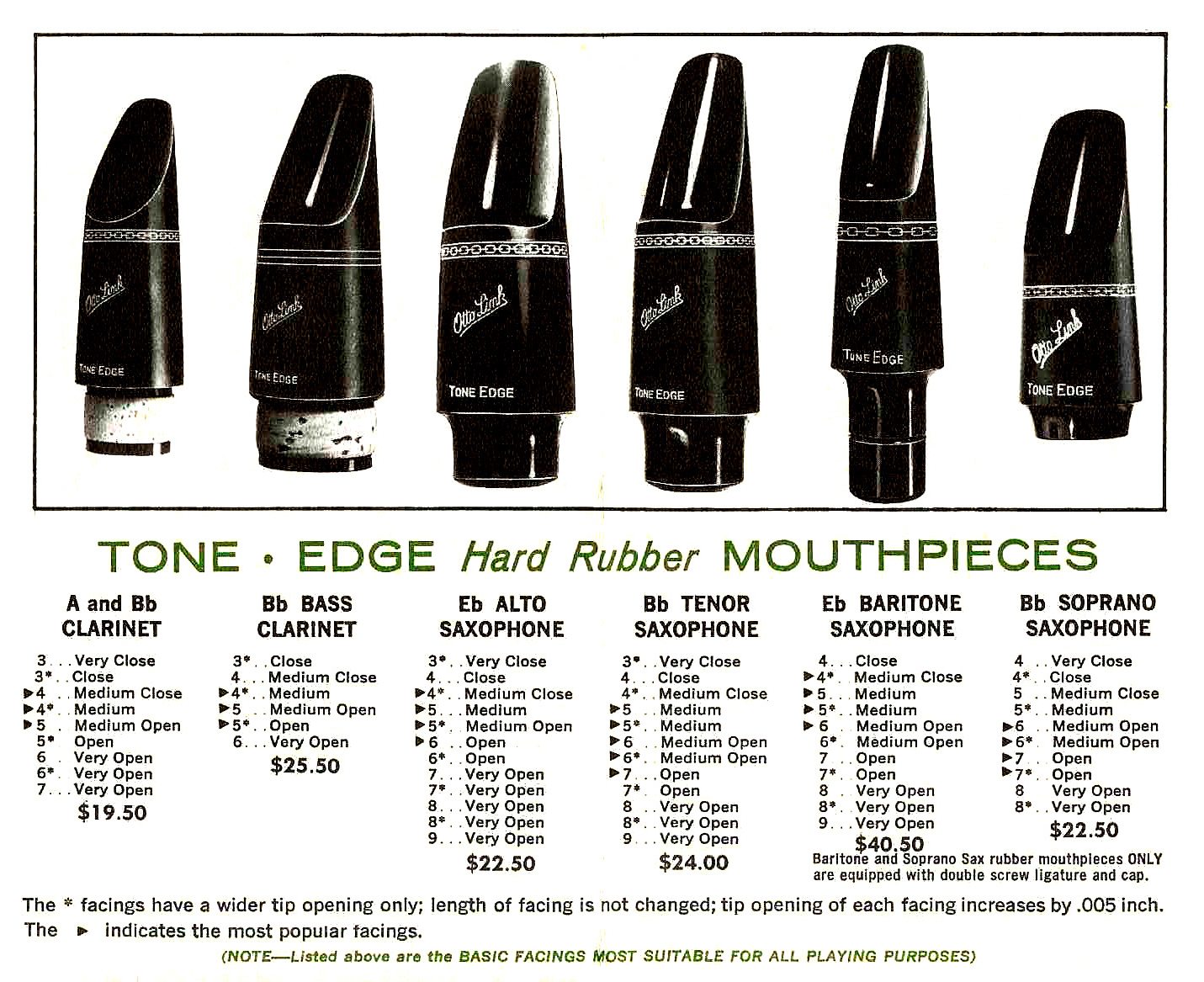
VINTAGE OTTO LINK HARD RUBBER MOUTHPIECE LIGATURES:
Otto Link had two similar styles of ligatures for the NY and Florida mouthpieces. The tenors all had a T on the back, while the altos had an A on the back. Depending on the vintage, these stamps came in three various fonts.
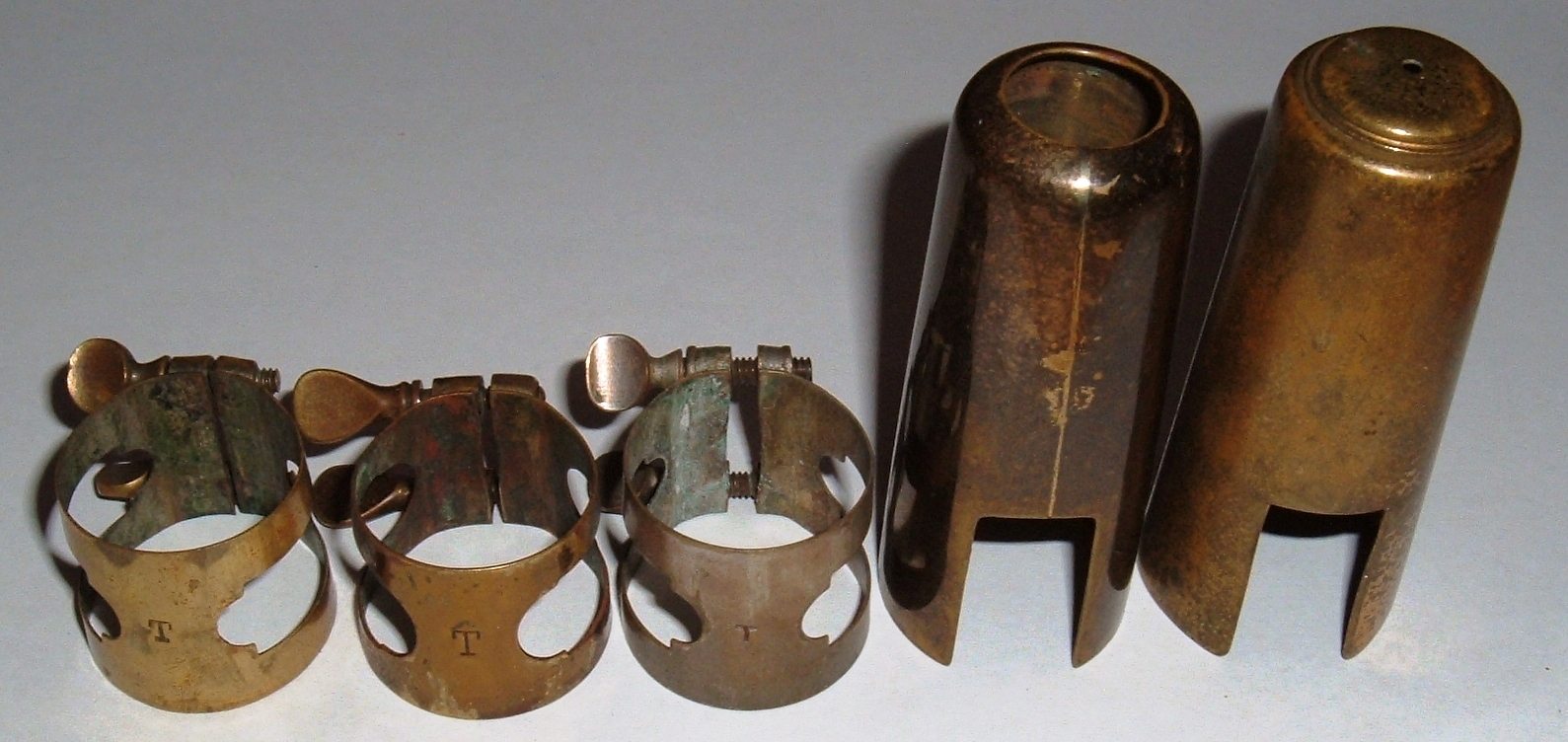
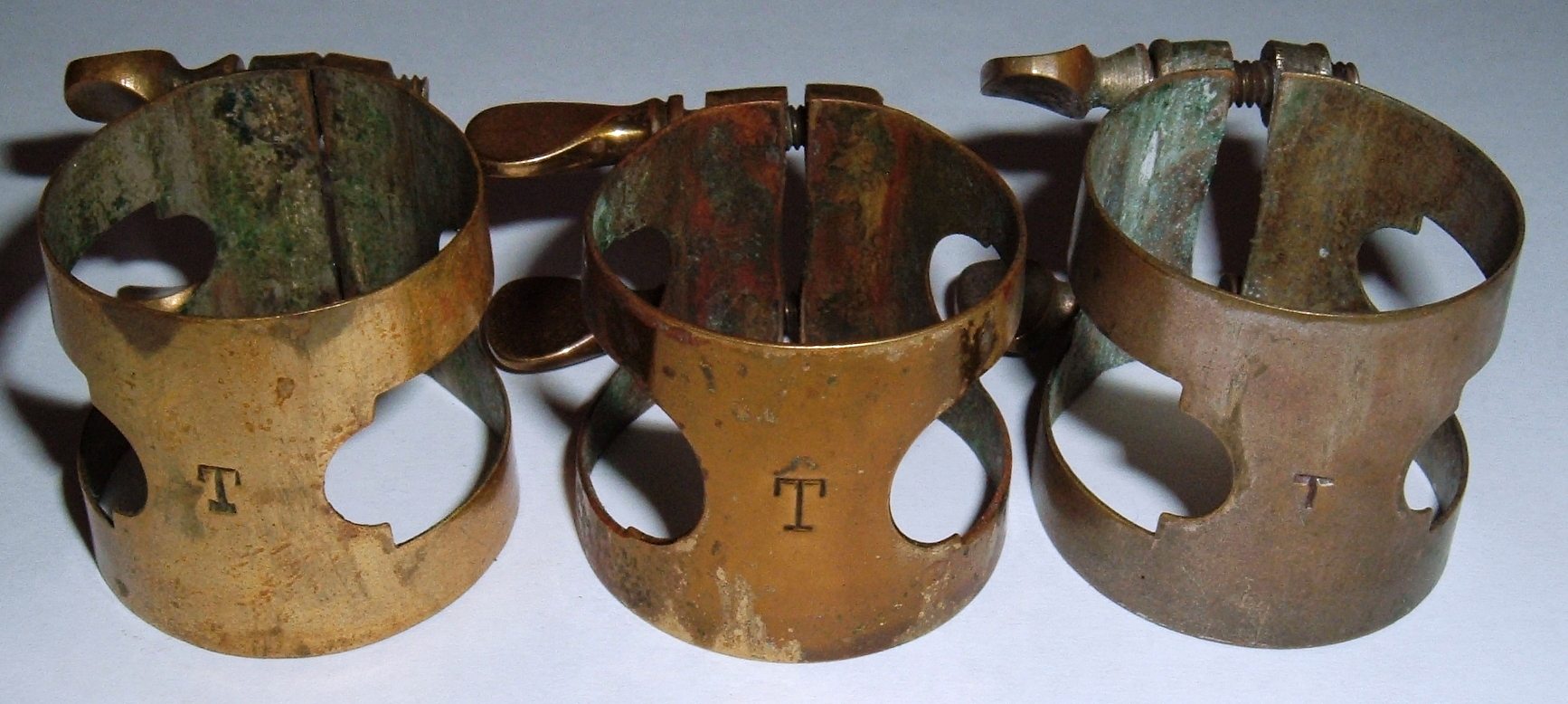
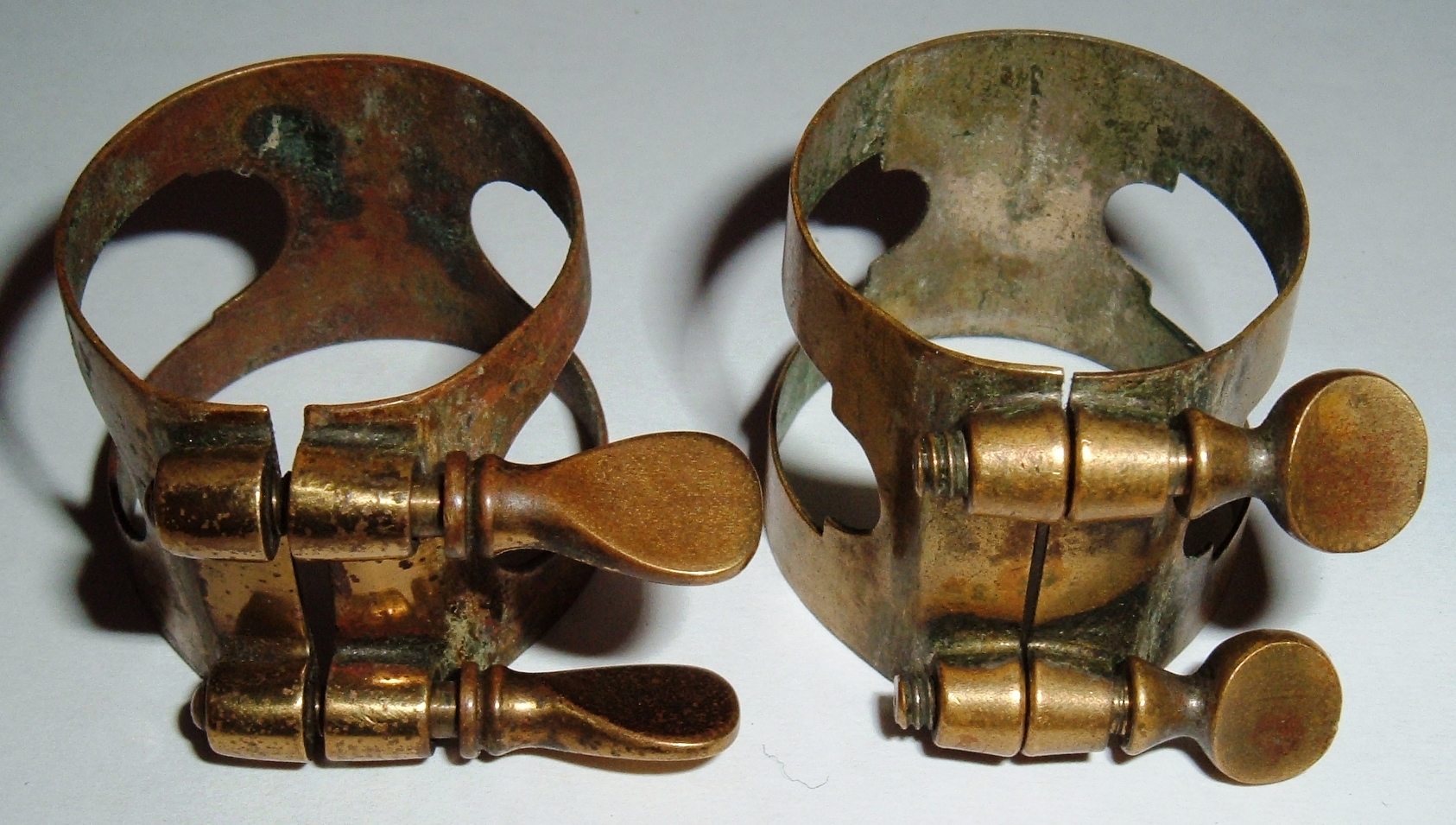
1973 TRANSITIONAL FLORIDA TO BABBITT MODELS
There was a shortage of Otto Link mouthpieces during the move which took approximately 18 months, so many rough blanks that had been made in Florida, were finished at the factory in Indiana. These are truly transitional models as they are Florida bodies, with the facings and finish work of the new factory in Indiana.
Transitional mouthpieces were made, but not finished, in Florida. They had more material in the baffle and floor than any other Otto Link ever made, creating a unique sound. These tended to have less finish work being done to them, however, many like the added brightness do to this extra material being left on.
TRANSITIONAL EARLY BABBITT SUPER TONE MASTER:
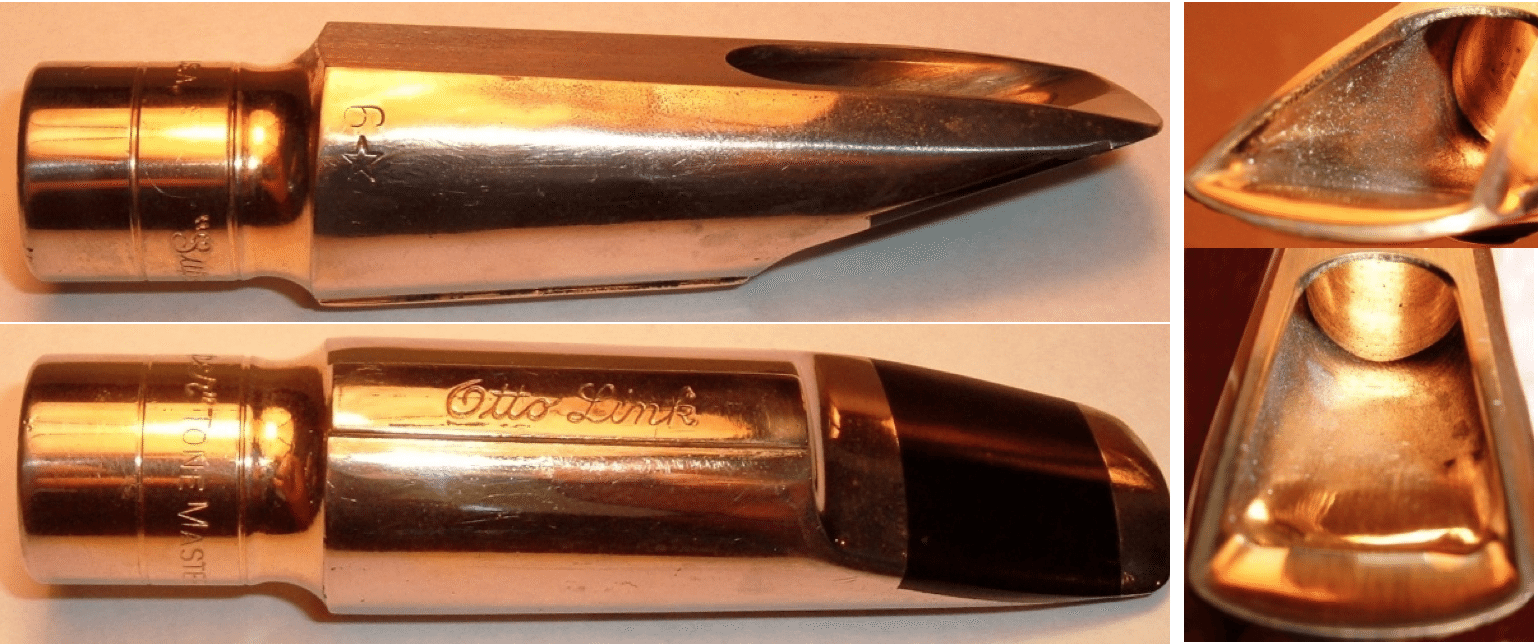
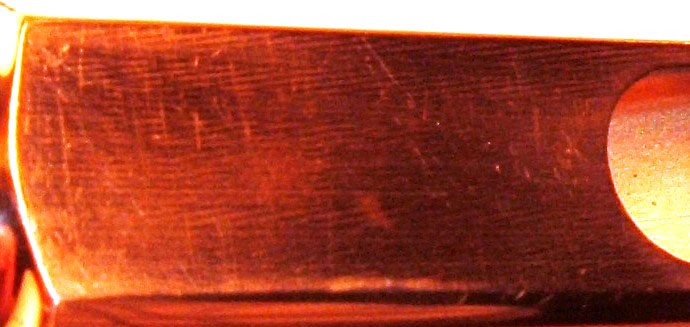
1975 EARLY BABBITT SUPER TONE MASTER:
These mouthpieces were the first produces at the Babbitt factory after Otto Link’s move to Elkhart, Indiana. They tended to have very good projection, and were quite bright due to a high but short step-baffle. The window was narrower at the tip, adding a bit more focused sound than the earlier Florida models. They had a larger font number stamped on the side of the body, had a larger bore diameter, and were silver plated under the gold. The metal soprano pieces moved permanently to a very small chamber, providing a brighter sound.
They were also faced with the new grinding wheel, leaving very distinctive denim like patterns on the table of the mouthpiece.
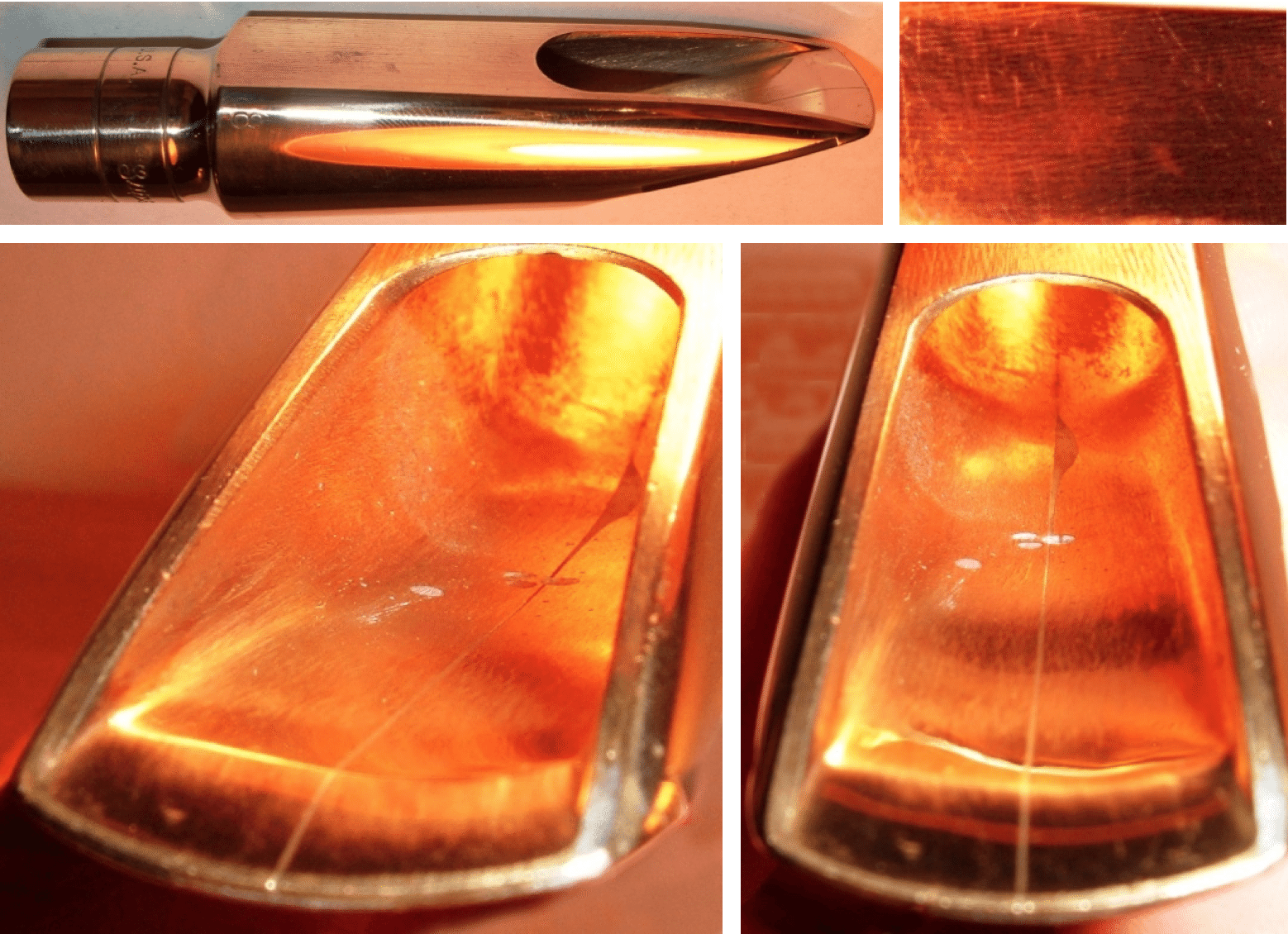
The ligature on these mouthpieces was quite different once again. It had a very large and flat thumb screw.

EARLY BABBITT TONE EDGE:
These mouthpieces are the first to have the signature of Otto Link written straight across the back of the mouthpieces. They read USA on the shank and had a larger inner bore diameter. They had about the same amount of baffle material in them as the Florida models, but with a slightly narrower window. The hard rubber altos gained some material in the baffle area and floor, increasing their projection. The sopranos moved to a smaller chamber (just a little larger than the vintage Selmer Soloist pieces), giving them a very nice sound similar to the vintage Selmers.
Because of the extra projection these had due to the large amount of baffle material, these are also considered quite valuable. You must look at the baffle though to distinguish these though, as the outside looks very similar to the later models.

VARIOUS OTTO LINK VINTAGE BOXES:
Several mouthpiece boxes are shown below. On the left side we see the Tone Master, NY Super” Tone Master and the Florida Super Tone Master box. On the right side we see three NY vintage hard rubber mouthpiece boxes, with a Florida hard rubber mouthpiece box on the bottom.
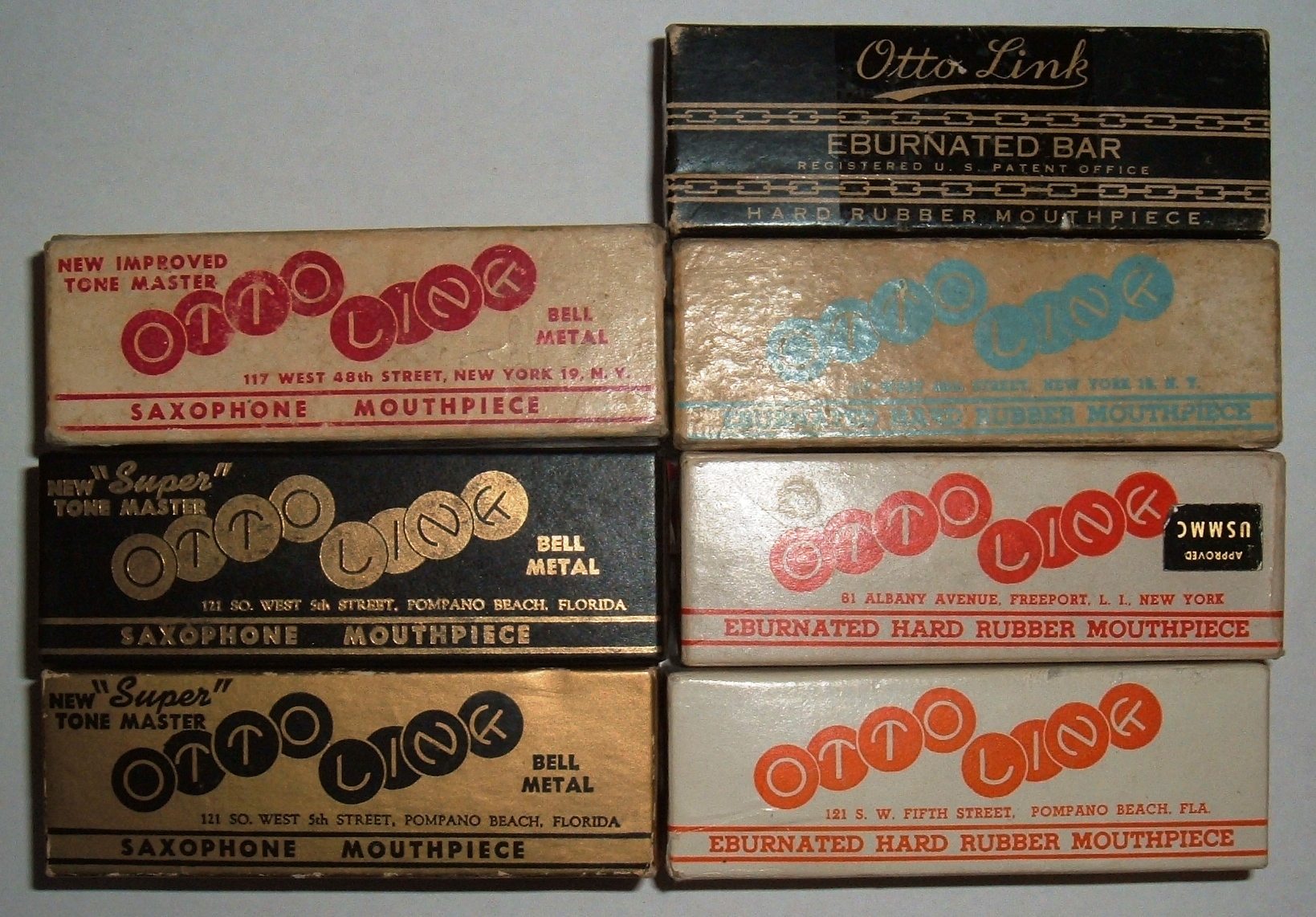
1980 to PRESENT – CURRENT MODELS
These mouthpieces, in both metal and rubber, have less material in the floor of the mouthpiece than the more vintage models, producing a darker sound. The tips are a little narrower as well. The first pieces had a very long body, but were converted back to a traditional length after several years. Sometime after 1980 they started stamping the shanks without the quote marks when the old stamp was worm out.
In the late 1990s, Otto Link made a New York model for tenor. They had a wider width at the tip and a larger chamber.
These metal models have silver under the gold plating and a large tip opening font stamped on the shank. This includes the long body, standard and NY models. The picture below shows a current model metal NY Otto Link on top, with the long body 1980s model under that, and a Florida model, for comparison purposes, at the bottom.
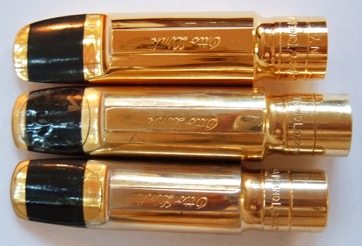
The alto pieces retained a lot of material in the baffle (particularly in the hard rubber version), giving them a lot of projection. The alto version still looks a lot like the vintage mouthpieces. The hard rubber tenor pieces are darker sounding and have an almost concave area directly behind the initial baffle. The tenor mouthpiece is shown below:

2000 – MILLENNIUM TENOR MOUTHPIECE
In 2000 Otto Link released a limited edition Millennium Mouthpiece. This is the same as their standard model, but with a brushed nickel finish with a blue bite insert, and was only available for tenor saxophone. Only 2000 of the special edition Otto Link pieces were made. The Millennium Mouthpiece comes in a blue and silver gift box.

RG OTTO LINK
The Otto Link RG (named after Rocky Giglio) has a distinctive hard rubber tooth protector which runs full bite length. The beak is thick, encouraging one to open the embouchure more. This mouthpiece actually looks a lot more like a Berg Larsen than an Otto Link, as it has a bullet cut chamber and flat inner side walls. Playing wise it also sounds more like a Berg Larsen too. It comes in hard rubber or satin stainless steel finish. A satin gold plating was available as special order, and it comes in three tip openings: .108″, .118″, or .128″.

2009 – NEW ‘VINTAGE’ SERIES
In commemoration of their 90th anniversary, jj Babbitt Company introduced the Otto Link Vintage mouthpiece for tenor sax. It was made to recapture ‘the sound’ of early Otto Links. The hard rubber version does have a lot more material in the baffle, and indeed is much like the Florida vintage Links.

The metal version says ‘Tone Master’ on the shank and it does indeed take after the very big chamber and low baffle New York ‘Tone Master’ mouthpiece. Each mouthpiece in this series is individually serial numbered.
2019 – FL OTTO LINK
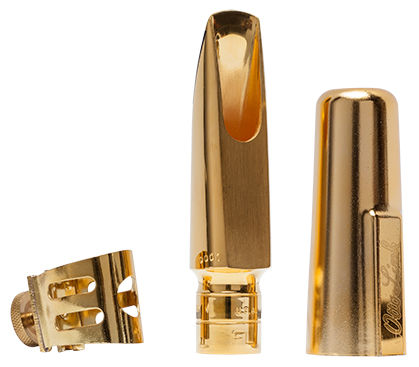
In 2019, celebrating its 100th anniversary, jj Babbitt Company, Inc. released the Otto Link FL (FLORIDA) mouthpiece for tenor saxophone.
jj Babbitt Company is duplicating the original Florida metal tenor mouthpiece itself!
‘FL’ stands for ‘Florida’ and is designed like the Florida metal model mouthpiece. This is ‘limited edition’ model.


